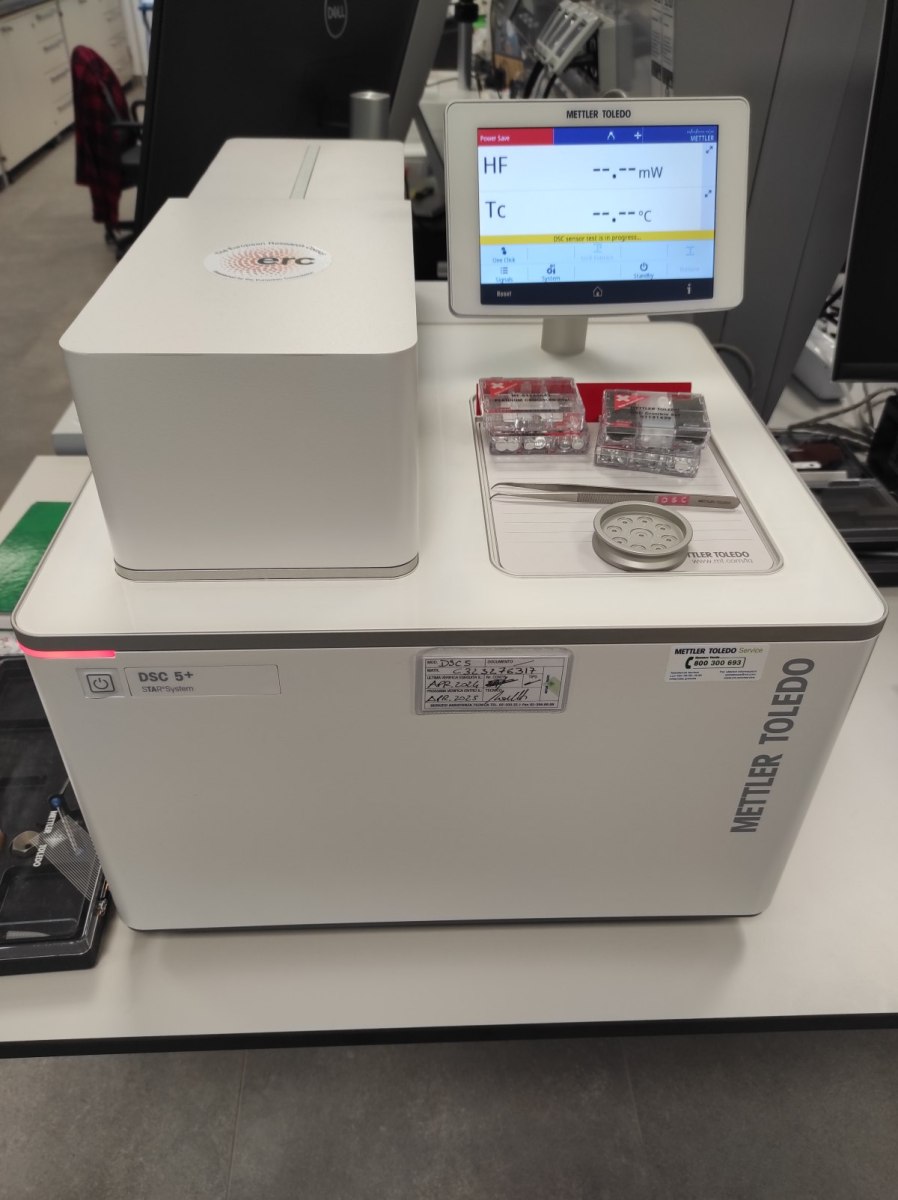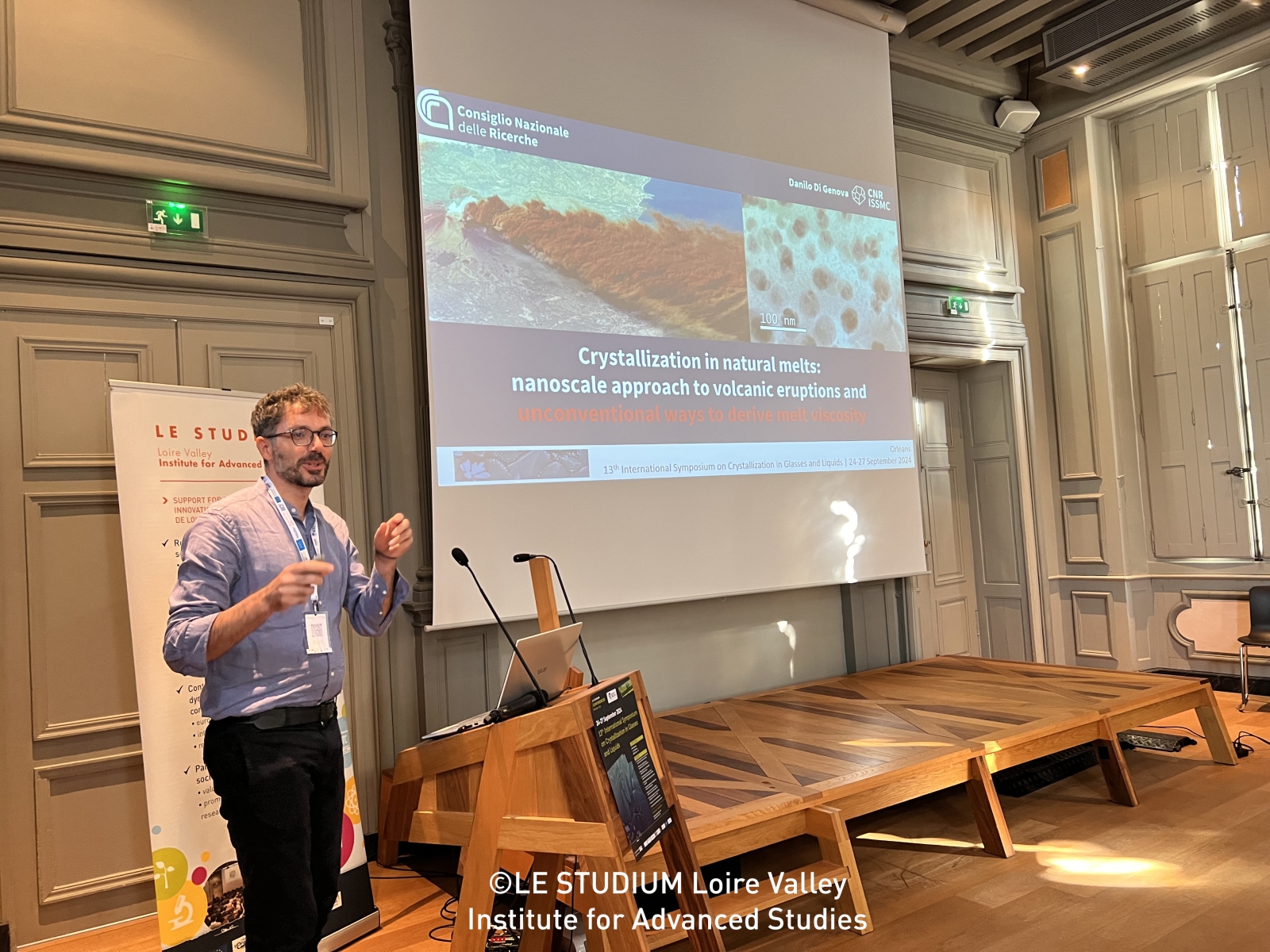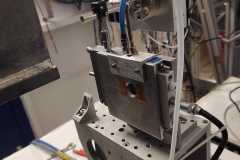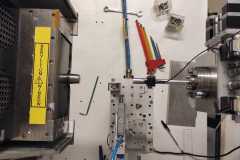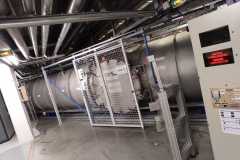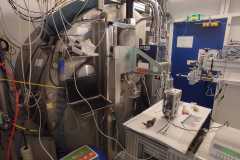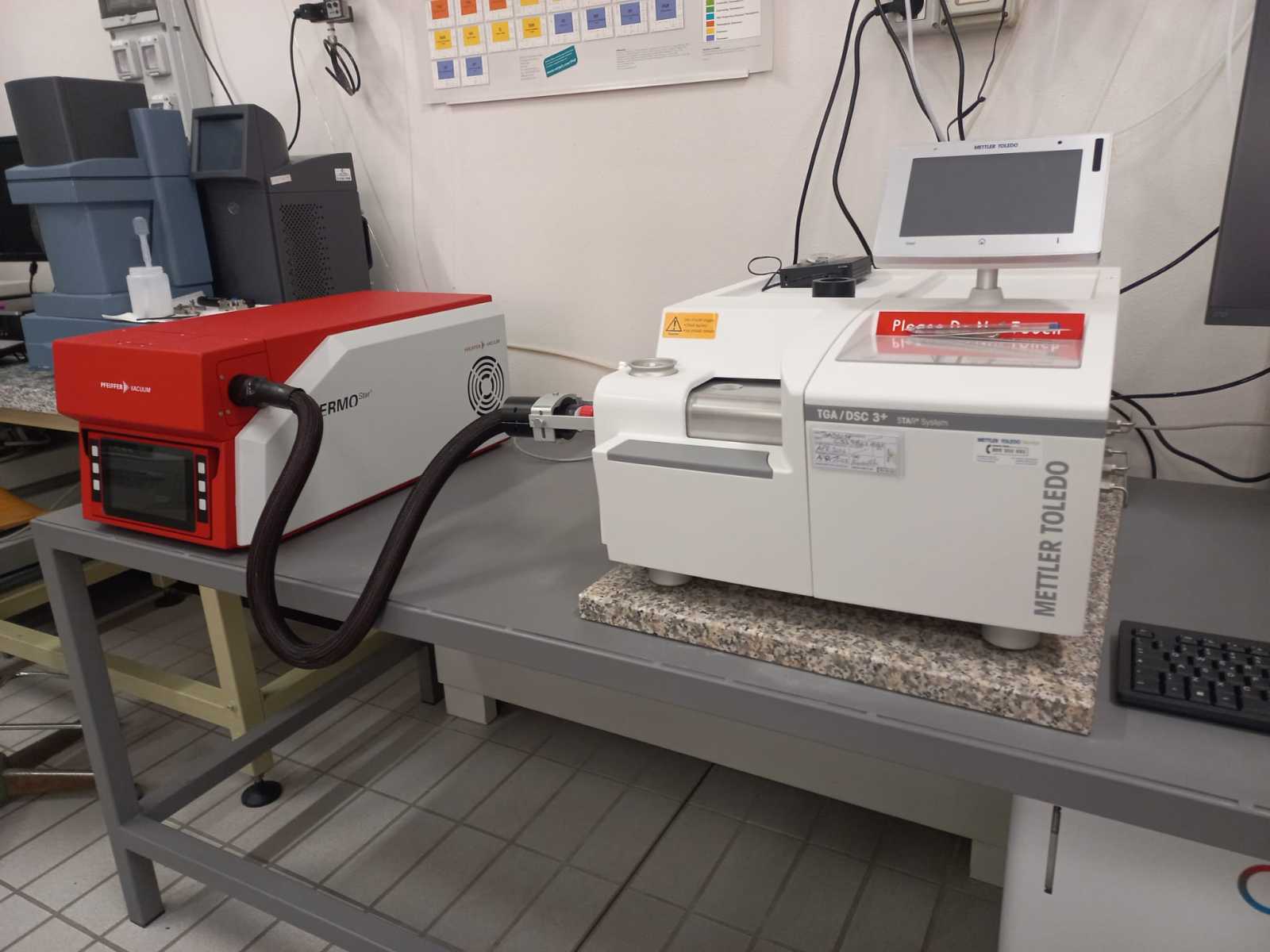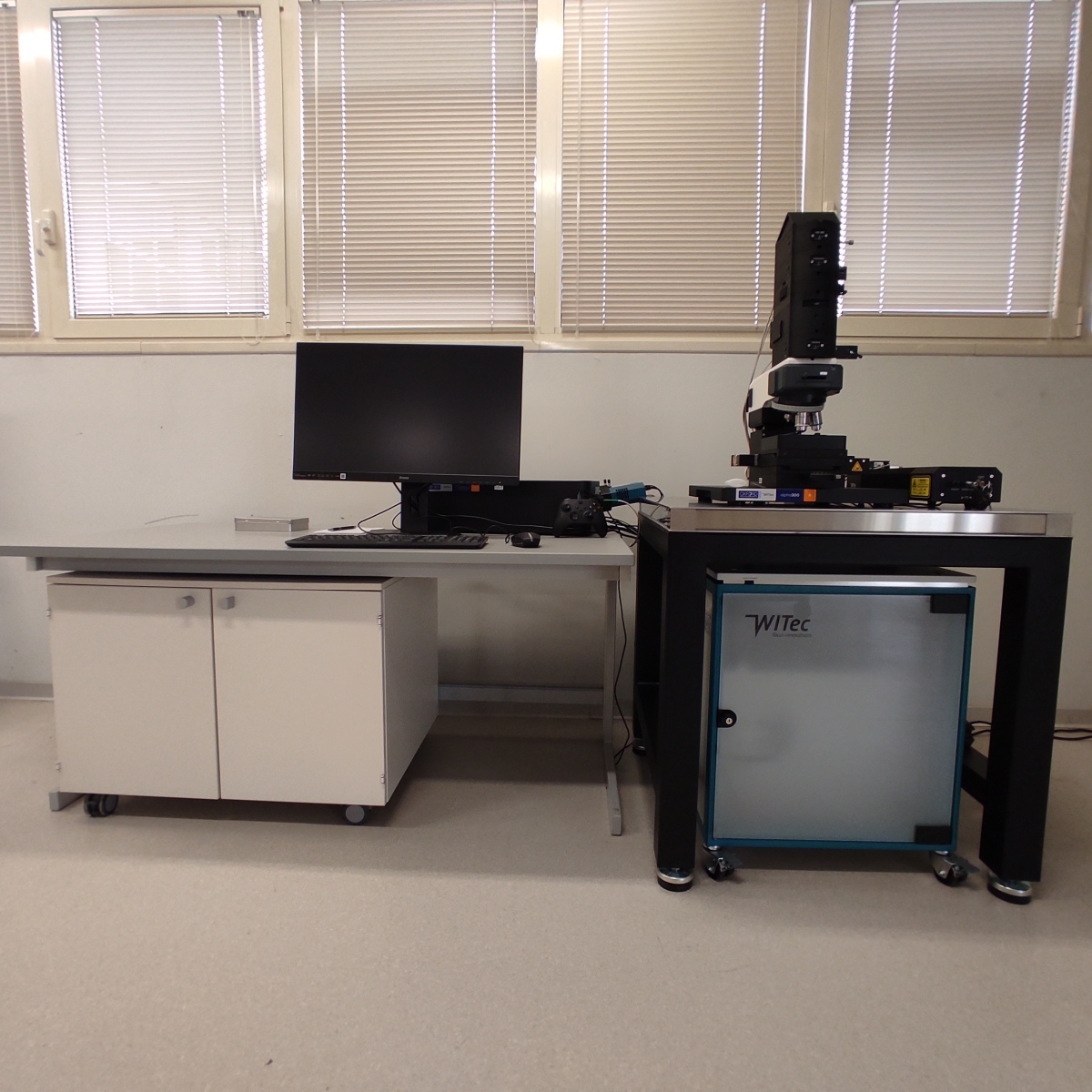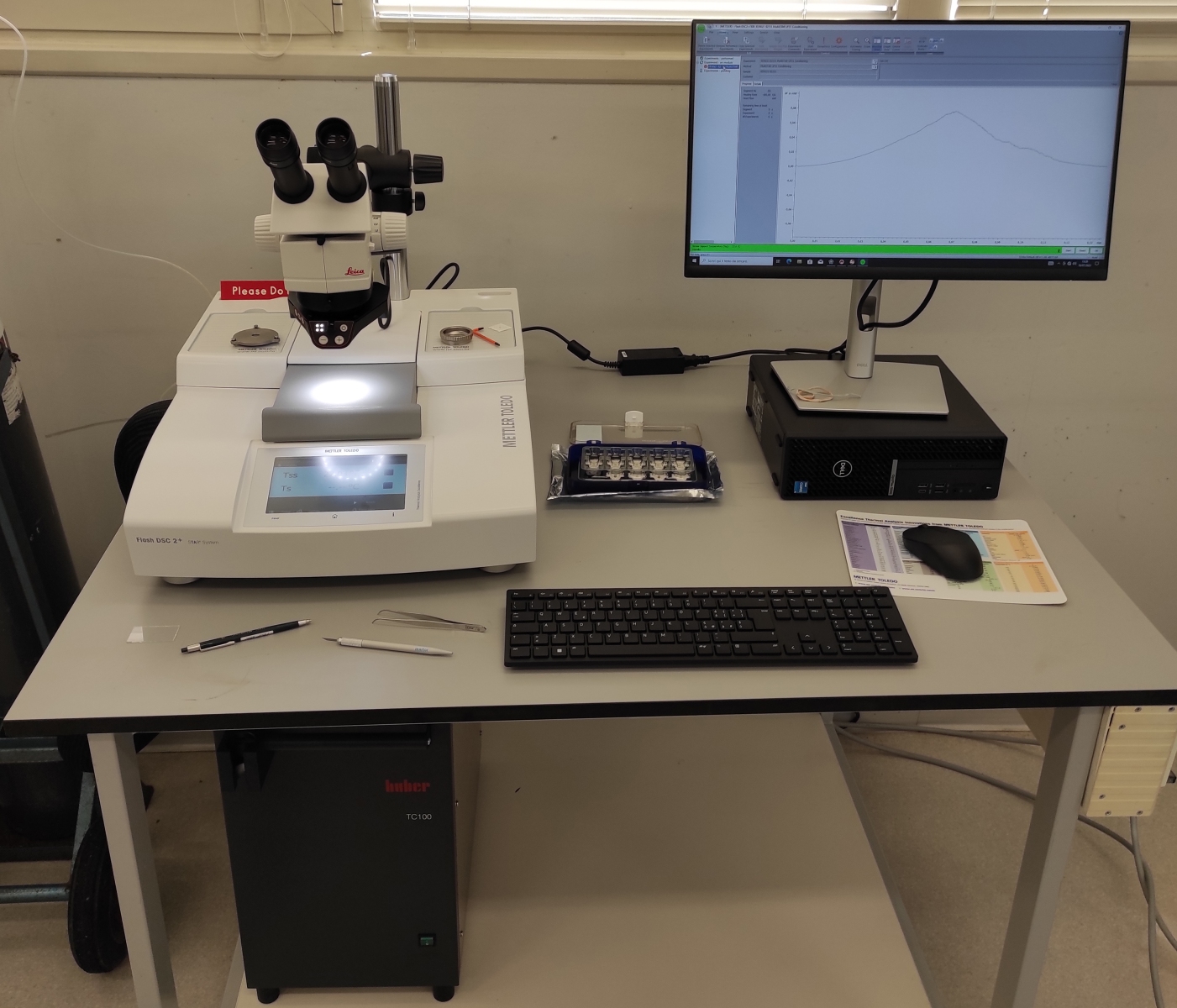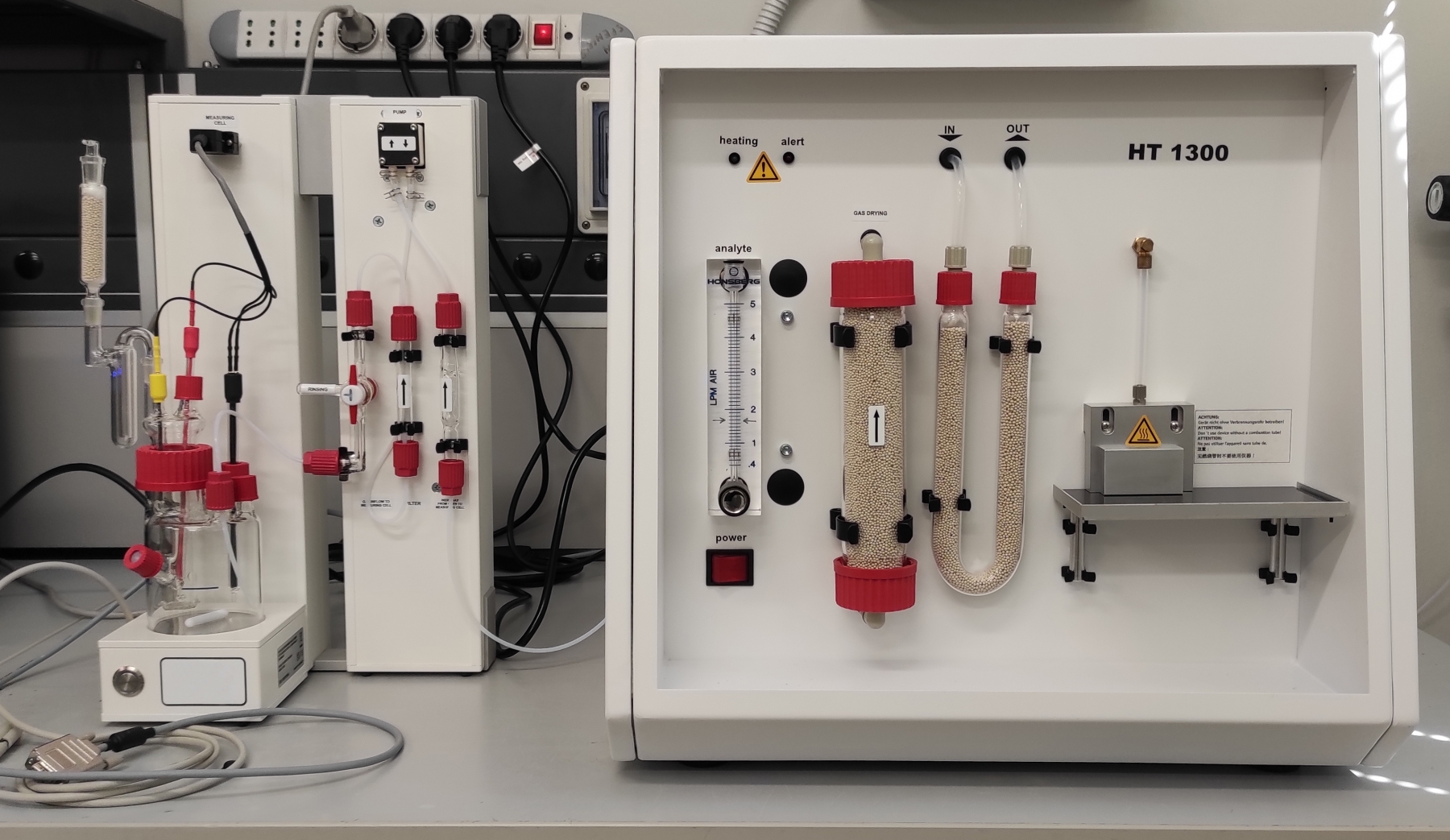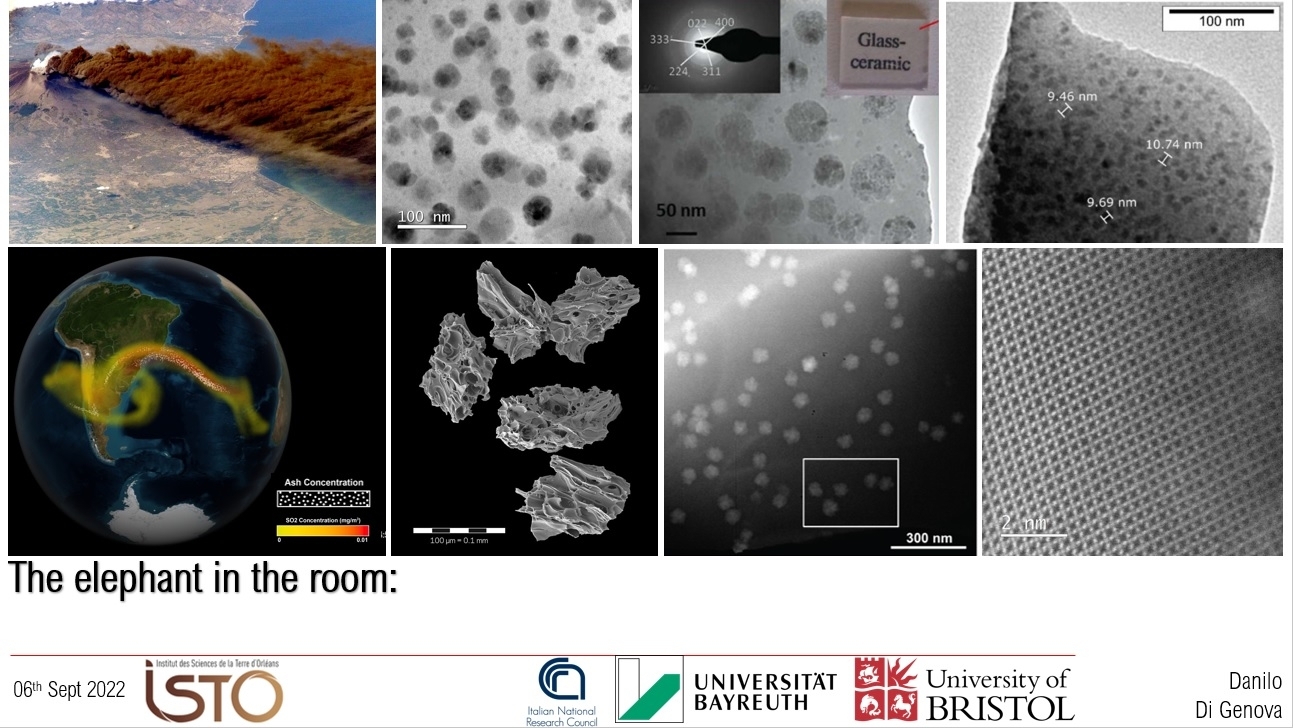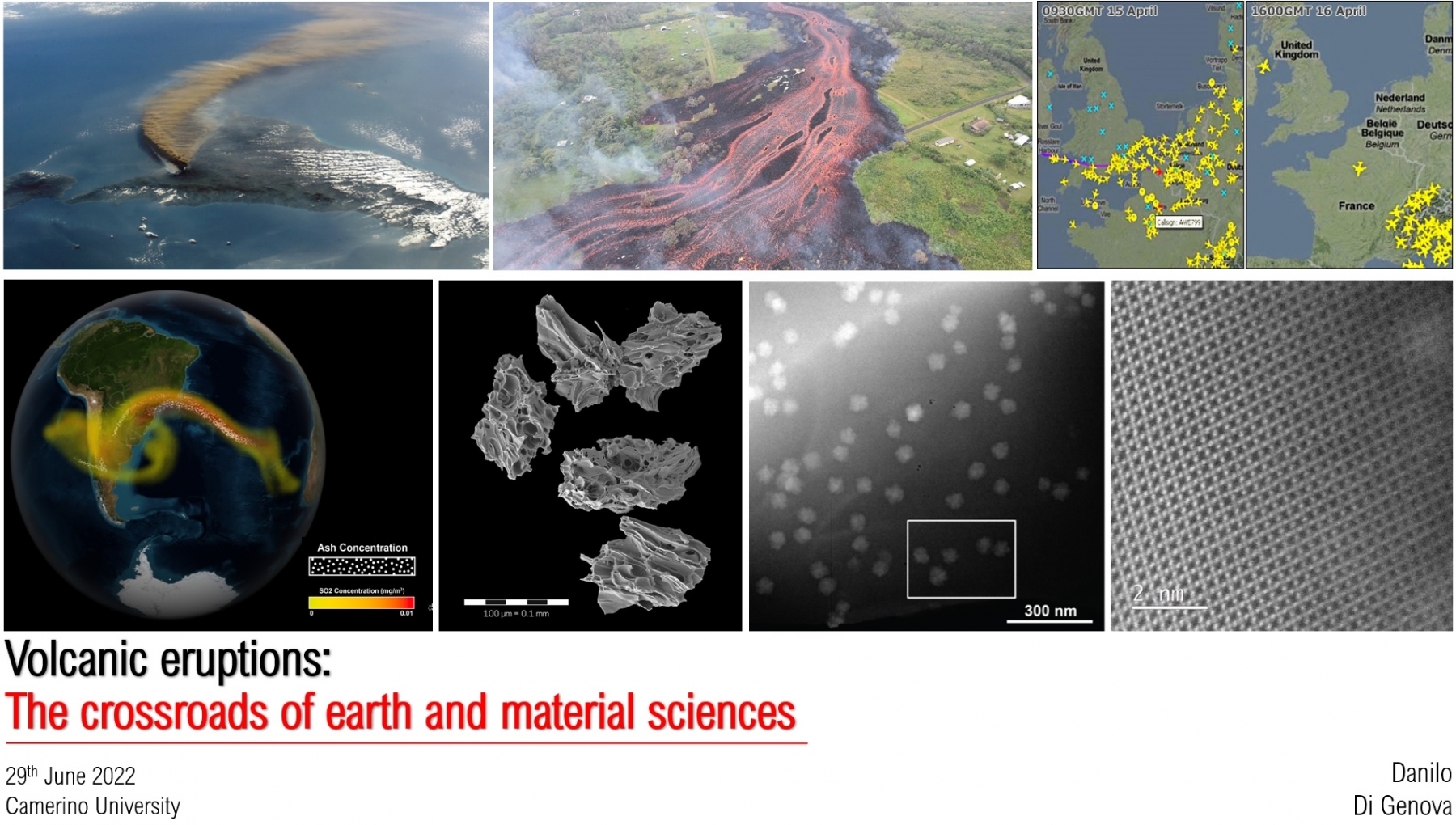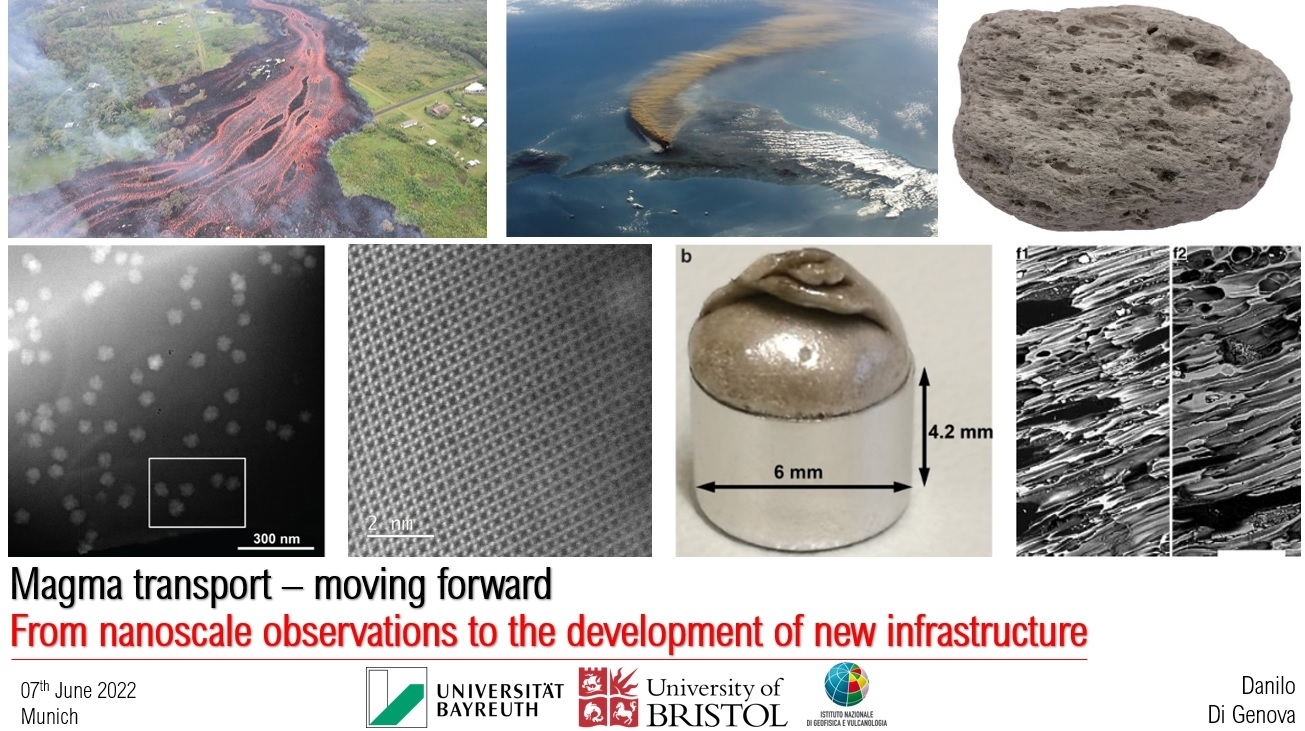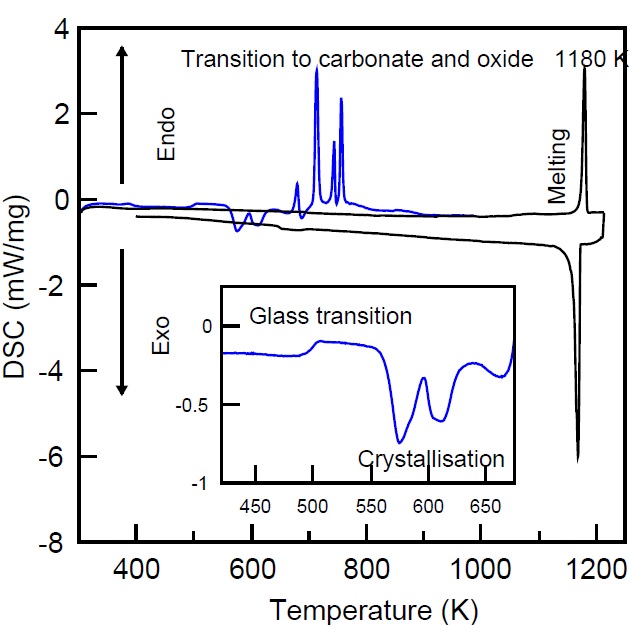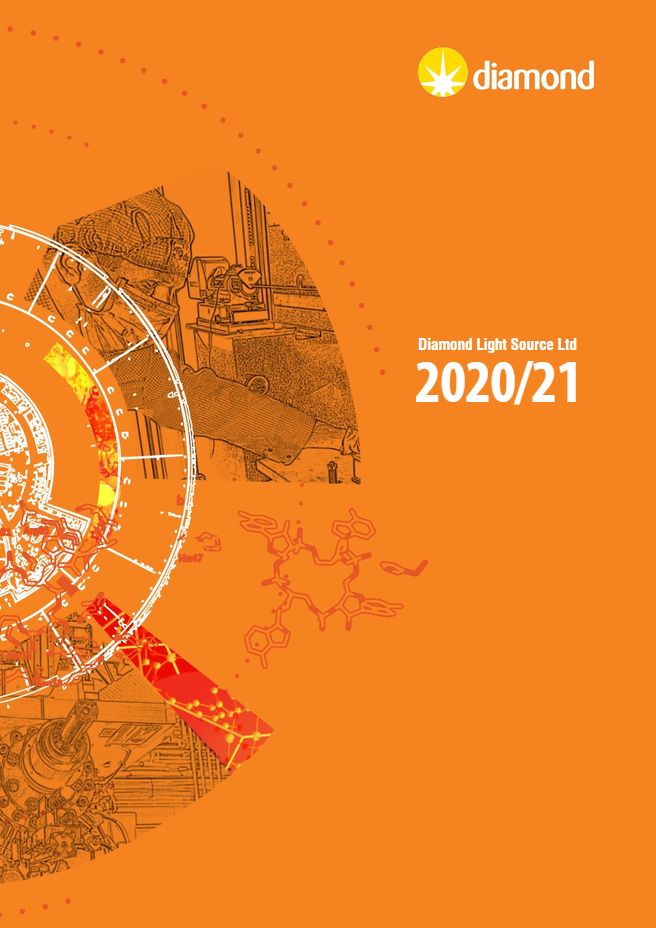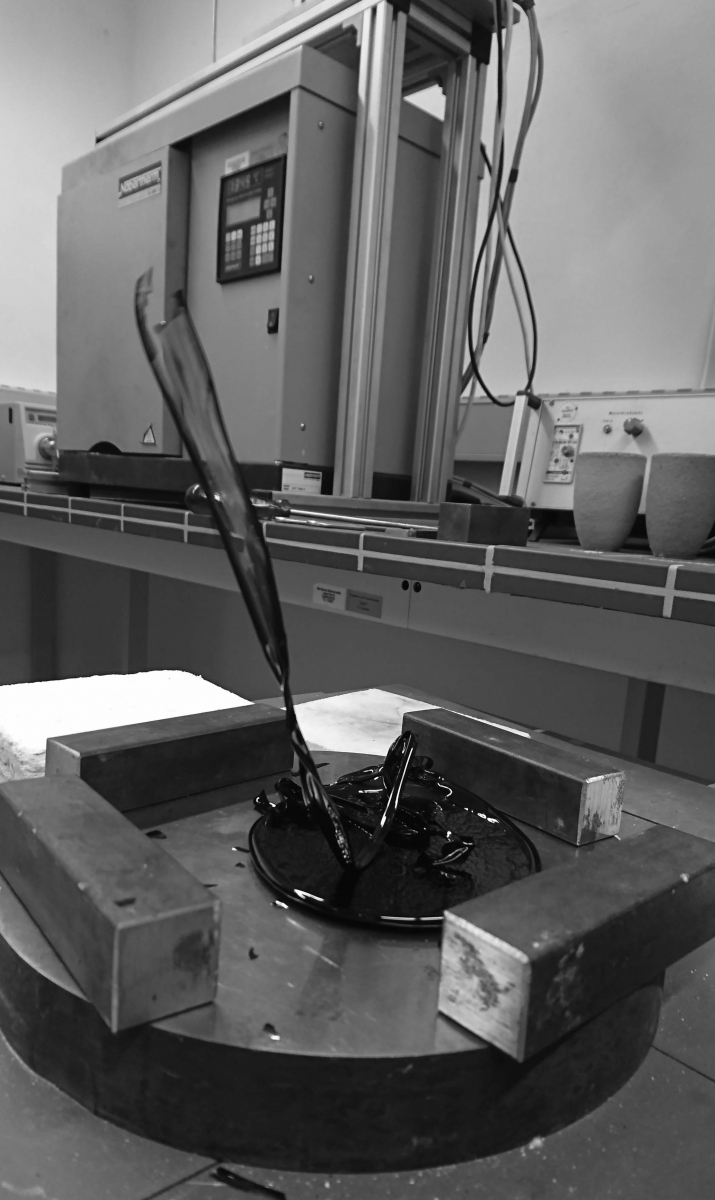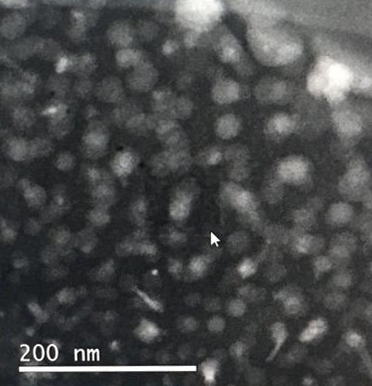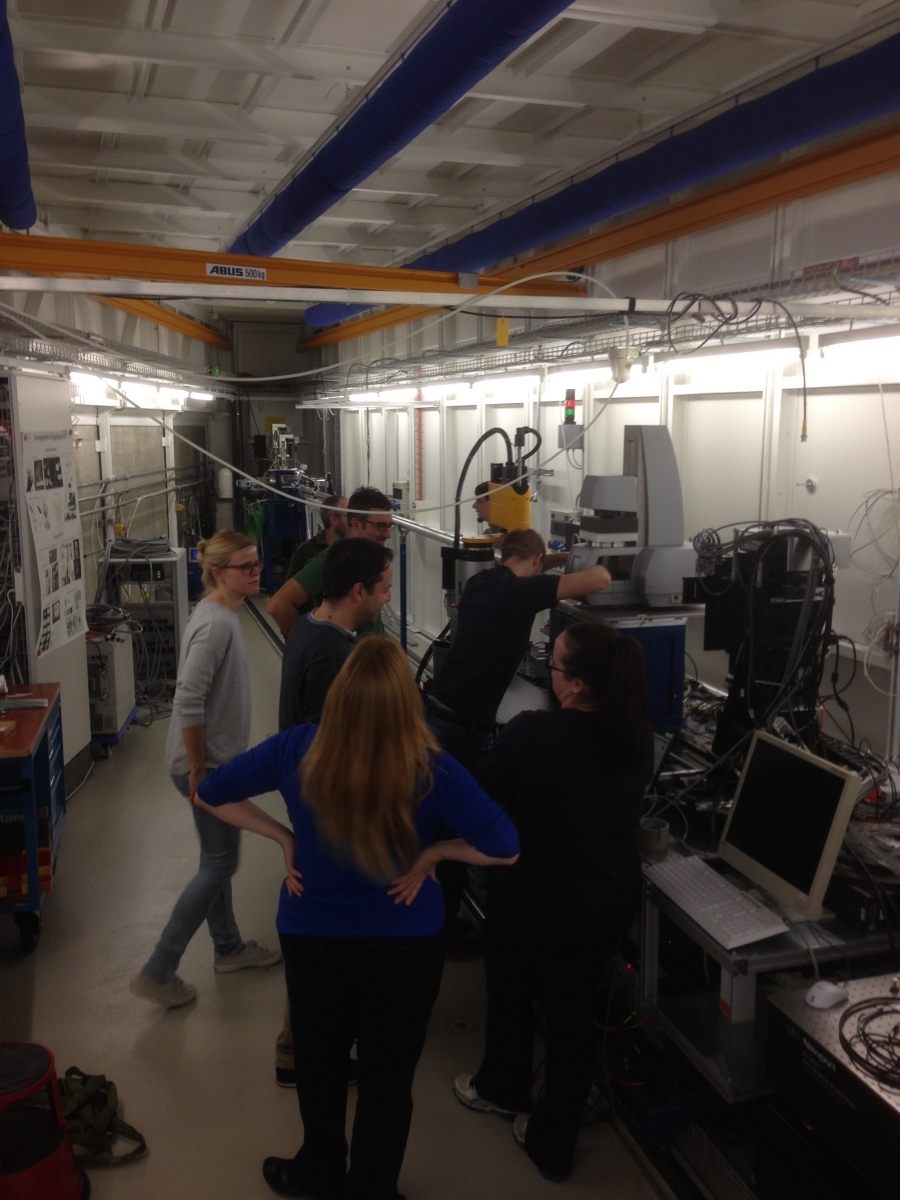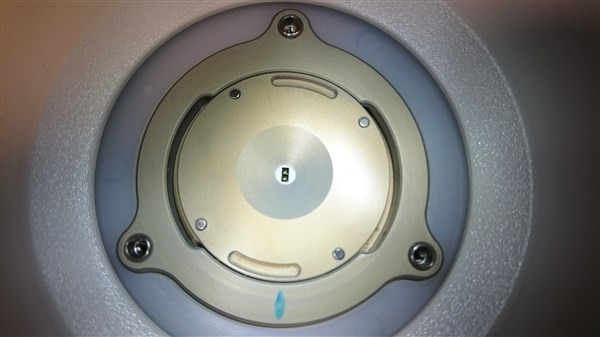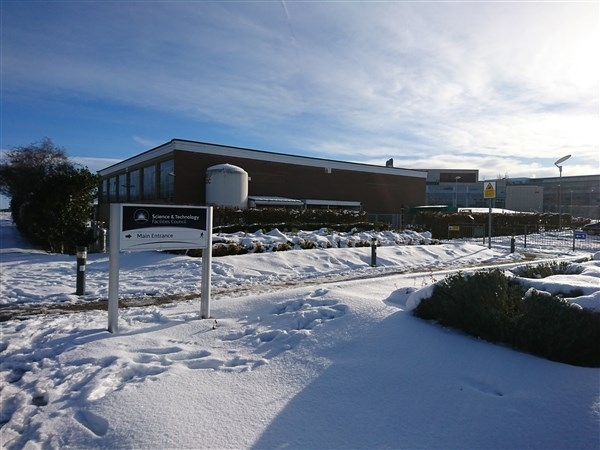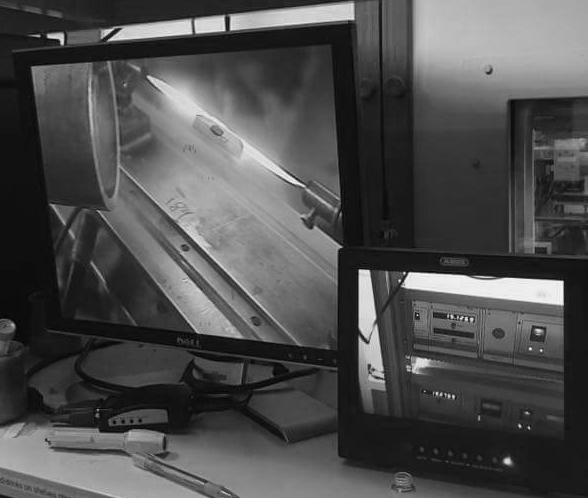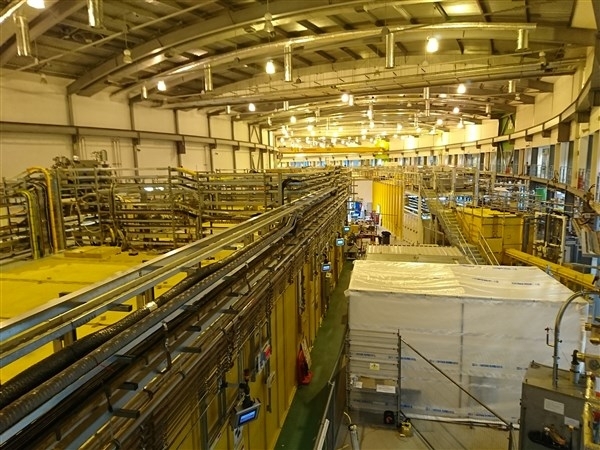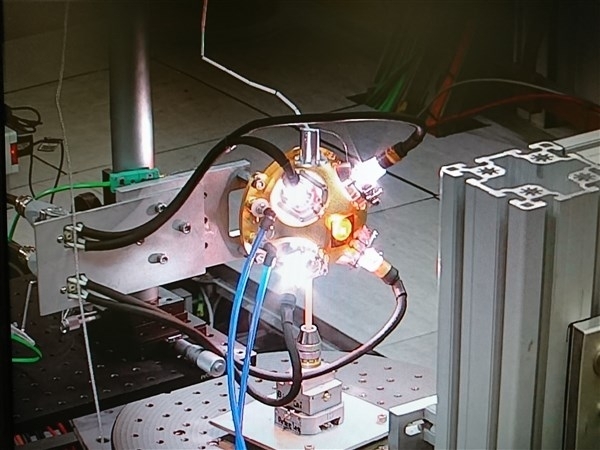April 2025. Ercolano, il cervello diventa vetro: il CNR-ISSMC ricostruisce la dinamica termica di un evento unico al mondo
Condividiamo l’intervista andata in onda su Futuro24, la rubrica di RaiNews24 dedicata a scienza e tecnologia, curata da Andrea Bettini e Marco Dedola. Durante la puntata, abbiamo discusso del nostro recente studio sulla vetrificazione del cervello umano ritrovato a Ercolano, un caso unico al mondo.
Ringraziamo la redazione di Futuro24 per l’opportunità di approfondire questo affascinante argomento e di condividerlo con un pubblico più ampio.
March 2025. Vesuvius volcano turned this brain to glass (video from Nature)
Our new Scientific Reports study uncovers a unique and rare phenomenon: the transformation of a human brain into glass during the eruption of Vesuvius in 79 CE. Normally, organic tissues do not vitrify at high temperatures, but we found that extreme heat—above 510°C—followed by rapid cooling caused this rare preservation. This discovery, the only known case on Earth, provides new insights into the extreme conditions of pyroclastic flows and how they impact human remains. Our findings shed light on the violent nature of the eruption and open new avenues for studying ancient biological materials.
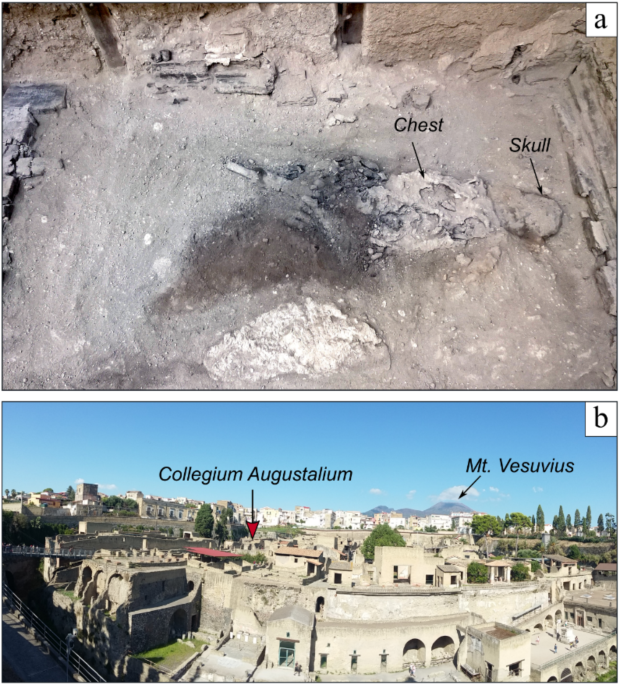
February 2025. New study on Colli Albani melt viscosity and implications for mafic Plinian eruptions
Our new study (Fanesi et al. 2025) looks at magma from Italy’s Colli Albani volcano and reveals that under high-temperature, water-rich conditions, the magma is much less viscous than expected, enablig fast transfer at depth. However, as it loses water, crystals form rapidly, making the magma up to 4300 times more viscous. These findings improve our understanding of how magma is stored and moves beneath the surface, shedding light on the processes behind explosive eruptions.
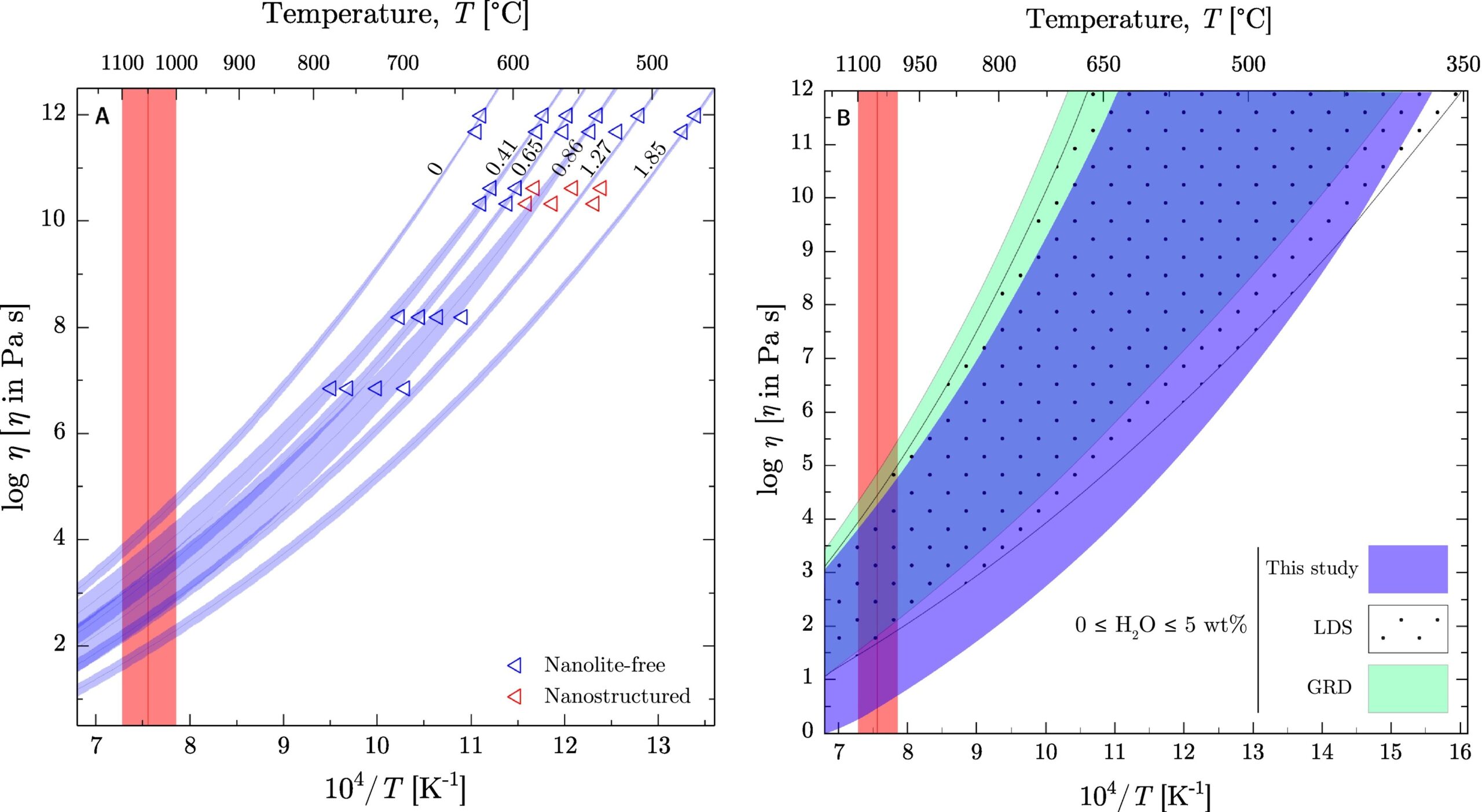
January 2025. New study on nanolite Crystallization, high-temperature Raman spectroscopy and low-temperature rock-magnetic analysis
Our latest study, published in Geochemistry, Geophysics, Geosystems, introduces a cost-effective way to study nanolites at high temperatures. Traditionally, such research required expensive tools, but we demonstrate that Raman spectroscopy—a more accessible technique—can effectively analyze nanolites in volcanic andesite. By heating samples above 655°C, we observed nanolite formation as temperatures increased and over time. This breakthrough offers a simpler method to investigate volcanic processes, advancing our ability to understand volcanic eruptions.
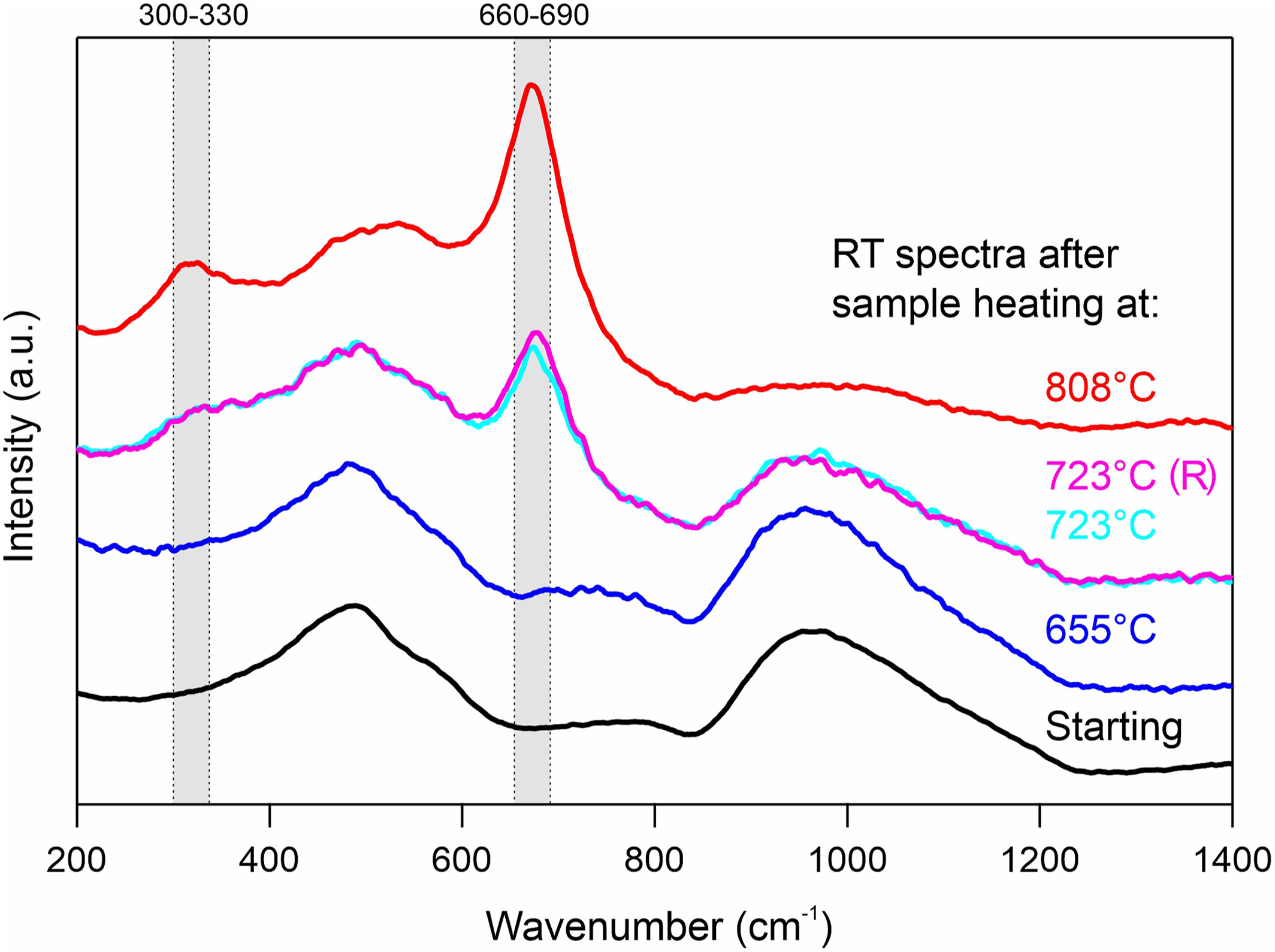
October 2024. First video documenting nanocrystal formation in a magma
We are thrilled to share that, for the first time, we have successfully filmed the formation of nanocrystals in magma at temperatures relevant to volcanic eruptions. This groundbreaking achievement was made possible through a collaborative effort between the GLASS laboratory at the Institute of Science and Technology for Ceramics (CNR-ISSMC) in Rome and the Institute of Extreme Conditions and Materials: High Temperature and Irradiation (CEMHTI-CNRS) in Orléans.
This video represents a significant milestone, not only for volcanology but also for the glass-ceramics community. It offers new insights into nanocrystal formation processes under extreme conditions, contributing to a deeper understanding of magma behavior and its potential impact on volcanic activity. The project results from intensive and dedicated collaboration among colleagues in Italy, France, and Germany.
Our findings have been published in a preprint at this link. We look forward to continuing this research and expanding our understanding of these fascinating processes.
October 2024. Differential Scanning Calorimeter
We are proud to introduce the DSC 5+ from Mettler Toledo, a high-precision Differential Scanning Calorimeter designed to measure the heat flow associated with material transitions. This instrument offers a wide temperature range from up to 700°C, allowing us to study thermal properties across a diverse array of materials, including volcanic melts, glasses, ceramics, and polymers. The DSC 5+ provides unparalleled sensitivity and accuracy, making it ideal for investigating phase transitions, melting behavior, glass transition temperatures, and crystallization processes. Its high resolution allows for precise thermal profiling, which is critical for both basic research into volcanic processes and the development of high-performance materials for industrial applications. The DSC 5+ also supports controlled cooling and heating rates, ensuring that even the most subtle thermal events are captured, which is essential for understanding the physicochemical changes in materials under varying environmental conditions. This tool plays a key role in our research into thermal stability, decomposition, and the calorimetric characterization of new materials.
September 2024. 13th International Symposium on Crystallization in Glasses and Liquids, Orléans (France).
I have been invited to speak at the 13th International Symposium on Crystallization in Glasses and Liquids, held in Orléans. This prestigious event continues the tradition of high-quality conferences organized by the International Commission on Glass (ICG), providing an essential platform to discuss the latest advancements in glass technology.
My presentation, titled “Crystallization in natural melts: nanoscale approach to volcanic eruptions and unconventional ways to derive melt viscosity”, will explore an analytical and experimental approach to understanding magma fragmentation and its implications for explosive volcanic behavior. By employing advanced techniques, I will discuss how nanocrystal formation can influence magma viscosity and improve the numerical modelling of eruptions.
I am excited to learn from colleagues and industrial partners about the latest discoveries and updates in the glass-ceramics world. I look forward to establishing new collaborations and exchanging insights with fellow experts in the field. A special thanks to the conveners, the organizers, and all the speakers for their contributions in making this event an excellent opportunity for scientific exchange and growth.
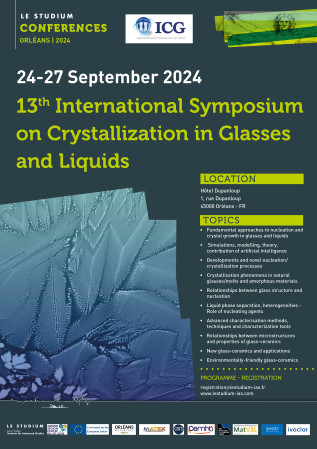
The conference will maintain the quality of the previous congresses while featuring new topics to learn about the latest developments in glass technology.
September 2024. Alfred Rittmann 2024 Conference, Catania (Italy).
The Alfred Rittmann 2024 Conference, held in Catania at the Benedictine Monastery from 18 to 20 September, was attended by over 300 researchers from universities and research institutes. The Alfred Rittmann Conference is promoted by the Italian Association of Volcanology (AIV).
Our team and collaborators participated with contributions on new models for magma viscosity, high-temperature in-situ observations of nanolite formation, eruptive dynamics of silicic peralkaline magmas from Pantelleria island, crystallization timescales and rheological behaviour in basaltic volcanic systems, dissolution kinetics of crystals in hydrous magmas through 4D in situ experiments.
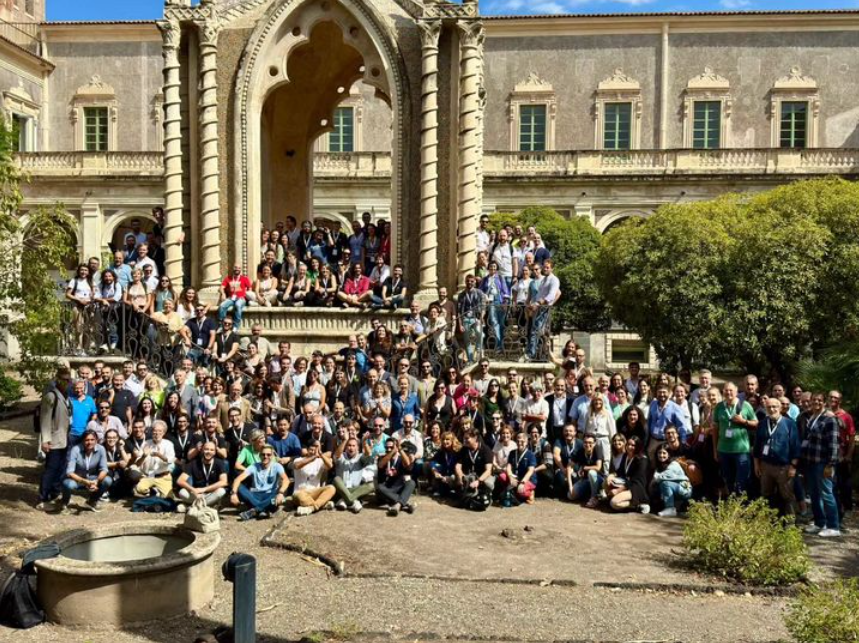
September 2024. New study on the viscosity of phonotephritic melt from Vesuvius.
Our study examines how magma interacts with carbonate rocks and how this affects its flow. Using volcanic melt from the 472 CE Pollena eruption at Vesuvius, we added CaO and a mix of calcium and magnesium oxides to mimic natural interactions with carbonates. We found that CaO reduces the magma’s viscosity significantly at high temperatures, while both CaO and MgO affect flow at lower temperatures. These changes impact how magma flows and mixes, helping improve predictions of volcanic behavior.

July 2024. Our team at the European Synchrotron Radiation Facility (ESRF), France.
The ID02 beamline at ESRF is a combined ultra small-angle and wide-angle scattering instrument. The microstructure and non-equilibrium dynamics of systems can be probed from sub-nanometer to micron scale, and down to sub-millisecond time range. We have performed experiments on magmas to study their nanoscale dynamics, which will be crucial for our future research on volcanic eruptions. Link to ID02.
June 2024. Influence of cooling and shear rates on volcanic dynamics: insights from Stromboli and Etna
Magma ascending through Earth’s crust undergoes complex chemical and physical changes that can lead to crystallization, contributing to a thermodynamic equilibrium state. This process significantly impacts volcanic system dynamics and eruptive styles. Our new study on Stromboli (Italy) magma revealed that cooling rates strongly influence basalt solidification. In contrast, shear rates have a lesser effect, with differences noted compared to Etna basalts due to varying chemical compositions.
May 2024. Magma titanium and iron contents dictate crystallization timescales and rheological behaviour in basaltic volcanic systems
Volcanoes can erupt in a variety of ways, from gentle lava flows to violent explosions. Our study suggests that the composition of the magma plays a key role in determining how explosive an eruption will be. We focused on two types of volcanoes: Stromboli, known for its frequent, but relatively small eruptions, and Mount Etna, with a history of both explosive and effusive eruptions. We found that the difference in how quickly the magma crystallizes is due to the magma’s composition. We concluded that the speed of crystallization in these two basaltic magmas may influence how gas escapes from the magma, which affects how violently the volcano erupts.

March 2024. Simultaneous thermal analysis (STA, TGA-DSC) coupled with evolved gas analysis by mass spectrometry (EGA-MS)
Introducing our new Mettler Toledo TGA/DSC 3+ apparatus, an advanced system that combines simultaneous thermal analysis (STA) and evolved gas analysis by mass spectrometry (EGA-MS). This equipment integrates Differential Scanning Calorimetry (DSC) and Thermogravimetric Analysis (TGA) with the ThermoStar Pfeiffer Vacuum GSD 320 EGA-MS. Capable of reaching temperatures up to 1500°C, the TGA/DSC 3+ measures heat flow and identifies volatile species released during thermal analysis. The integration of EGA-MS allows for simultaneous monitoring of mass changes and thermal events while analyzing evolved gases. This new addition to our lab enhances our ability to analyze material properties and behaviors under high-temperature conditions, providing detailed insights into thermal decomposition processes, phase transitions, and chemical reactions. The TGA/DSC 3+ EGA-MS is a valuable tool for advancing our research and expanding our understanding of various materials.
October 2023. Kinetic partitioning of trace cations between zoned clinopyroxene and a variably cooled-decompressed alkali basalt
Our new study examines trace cations in crystals from volcanic rocks at Mt. Etna in Italy. The crystals show various zoning patterns due to differences in the melt composition and supersaturation effects. The research focuses on the thermodynamics of cation distribution within these crystals, highlighting how kinetic factors play a significant role, leading to changes in crystal structure and electrostatic forces. This complexity suggests that the traditional notion of constant partition coefficients in equilibrium may not apply to the dynamic conditions of crystal growth in volcanic systems, making it important to consider local interface equilibrium when interpreting magma compositions.
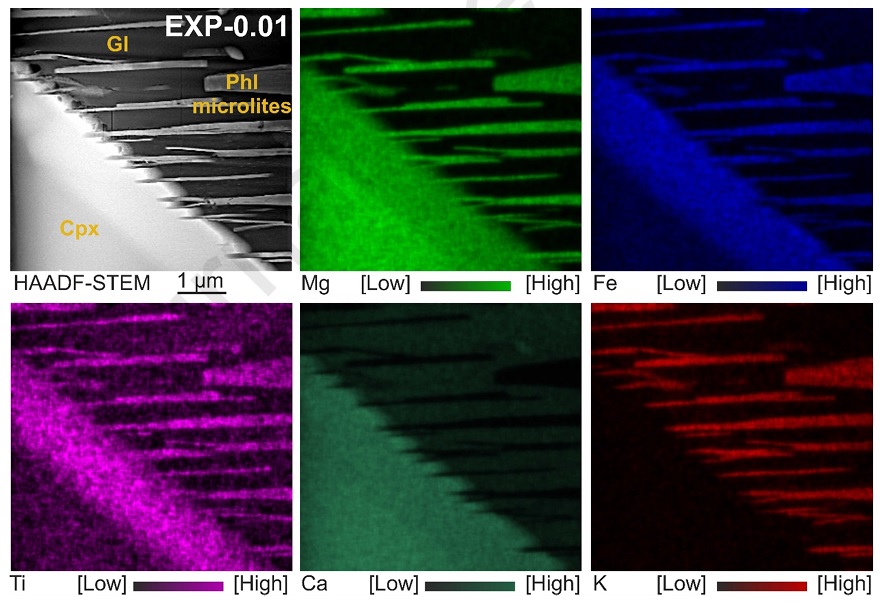
September 2023. Raman microscope
We are thrilled to introduce the latest addition to our laboratory – the cutting-edge Raman spectroscopy microscope. This remarkable instrument marks a significant advancement in our pursuit of scientific excellence in the field of volcanology. With unparalleled speed and resolution, this state-of-the-art microscope is poised to revolutionize our research capabilities. Equipped with specially designed lasers and a unique setup, it empowers us to explore the intricate world of nanocrystals within volcanic materials, unraveling their secrets and enhancing our understanding of volcanic processes. We will be conducting in-depth analyses of volcanic samples, delving into the complexities of volcanic phenomena with unprecedented precision.
August 2023. Non-stoichiometric crystal nucleation: Effects on the viscosity of the residual melt
In the process of synthesizing a spodumene glass (LiAlSi2O6), in our new study, Zandonà et al. 2023 Journal of Non-Crystalline Solids we introduced a doping of 4 mol% TiO2 as a nucleating agent. However, as we delved into characterizing the glass’s viscosity, we encountered a significant challenge. The vicinity of the glass transition posed a conundrum due to the emergence of thermally activated non-stoichiometric crystal nucleation. This complex interplay made precise measurements through micropenetration viscometry or calorimetry exceedingly difficult. The introduction of TiO2 crystal nucleation brought about a transformation in the composition of the remaining melt. This transformation was accompanied by a notable increase in measured viscosity, sometimes reaching up to 2 logarithmic units. The resulting alteration in viscosity readings was substantial, raising questions about the accuracy of our measurements. To overcome these complexities and ensure more reliable measurements that align closely with the viscosity of the original, homogeneous melt, we recognized the necessity for a meticulous experimental approach. Equally crucial was a deep understanding of the formation of seed crystals and their impact on the overall measurements. By addressing these challenges head-on, we aimed to navigate the intricacies of viscosity characterization and pave the way for more accurate insights into the glass’s behavior near the glass transition.
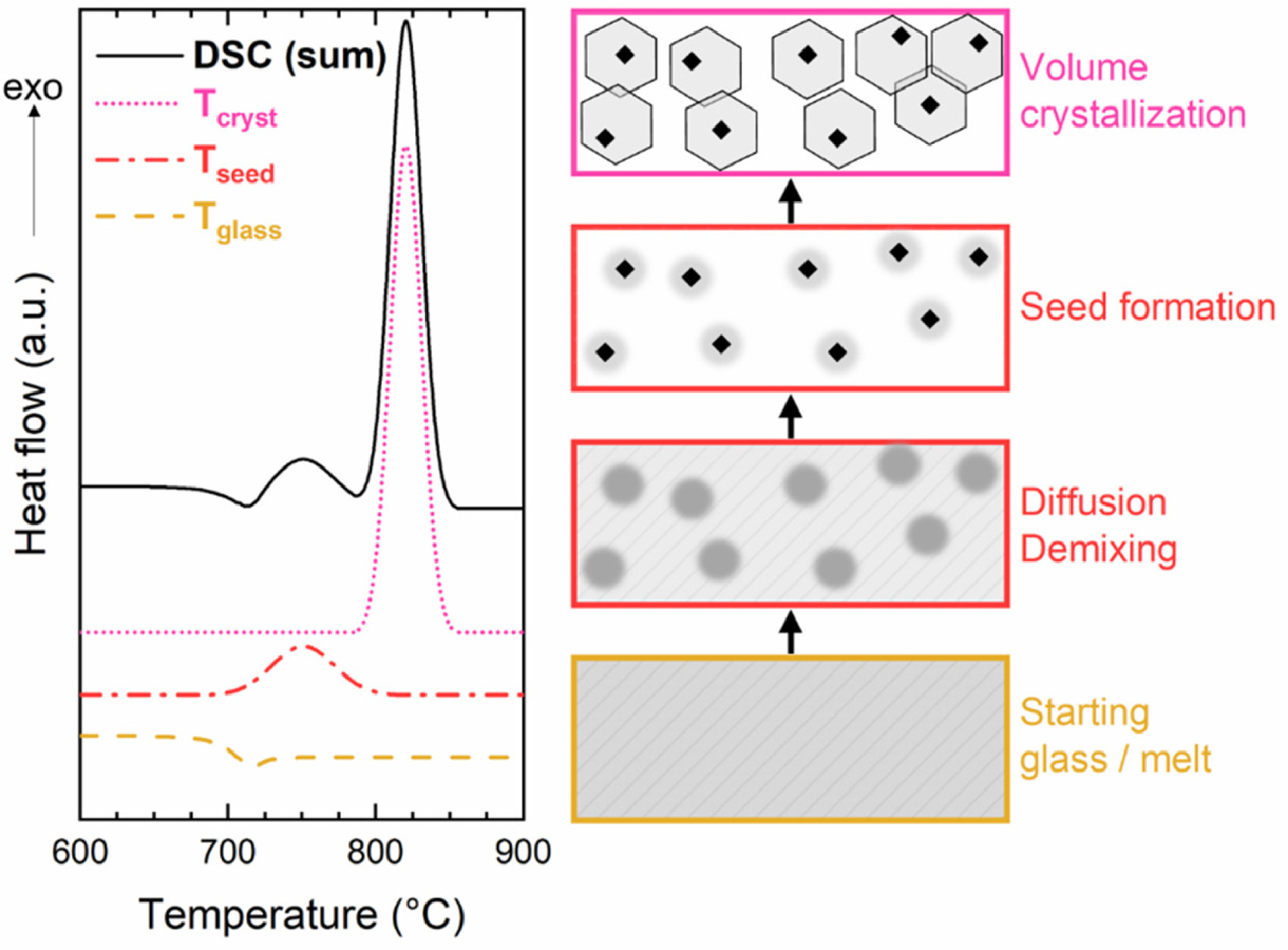
July 2023. Flash Scanning Differential Calorimeter (FDSC)
Step into the realm of our laboratory’s latest marvel – the Flash Scanning Differential Calorimeter (FDSC). This instrument boasts ultra-high cooling and heating rates, reaching an impressive 2.4 million and 3 million K/min, respectively. With such capabilities, it becomes possible to create well-defined structures or even erase complex reorganization processes within materials. But that’s not all – the FDSC takes material characterization to a whole new level by offering measurements across a wide temperature range, spanning from -95 to 1,000 °C. It truly stands as the ultimate tool for understanding and analyzing diverse materials. Not stopping there, this device also caters to the needs of oxygen-sensitive materials. Thanks to its specially designed screw cap, it ensures that such delicate samples can be characterized without any unwanted gas exchange with the environment. With the Flash Scanning Calorimeter in our lab, we are embarking on an exciting journey of discovery and innovation. Unravel the mysteries of materials, witness rapid transformations, and explore the possibilities of cutting-edge research like never before.
June 2023. Are volcanic melts less viscous than we thought?
In our new study, Valdivia et al. 2023 Contributions to Mineralogy and Petrology, we report a new viscosity model for Stromboli melt. Understanding the melt viscosity is crucial for predicting eruptions on a probabilistic base. Scientists have been using viscosity measurements to study how magmas flow, but recent research uncovered a potential problem. Tiny crystals of Fe–Ti-oxides, called nanocrystals, can mess up the data. To ensure accurate viscosity measurements, we developed a new viscosity model for Stromboli basalt that exclusively relies on data from samples without nanocrystals. Surprisingly, the old models have been overestimating Stromboli’s viscosity by 2 to 5 times. This discovery has significant implications, suggesting that Stromboli basalt may ascend from its storage area to the vent much faster than previously believed. These findings could help improve numerical modeling of magmatic processes at Stromboli volcano, providing valuable insights for evaluating eruptive scenarios. We provide a viscosity calculator.
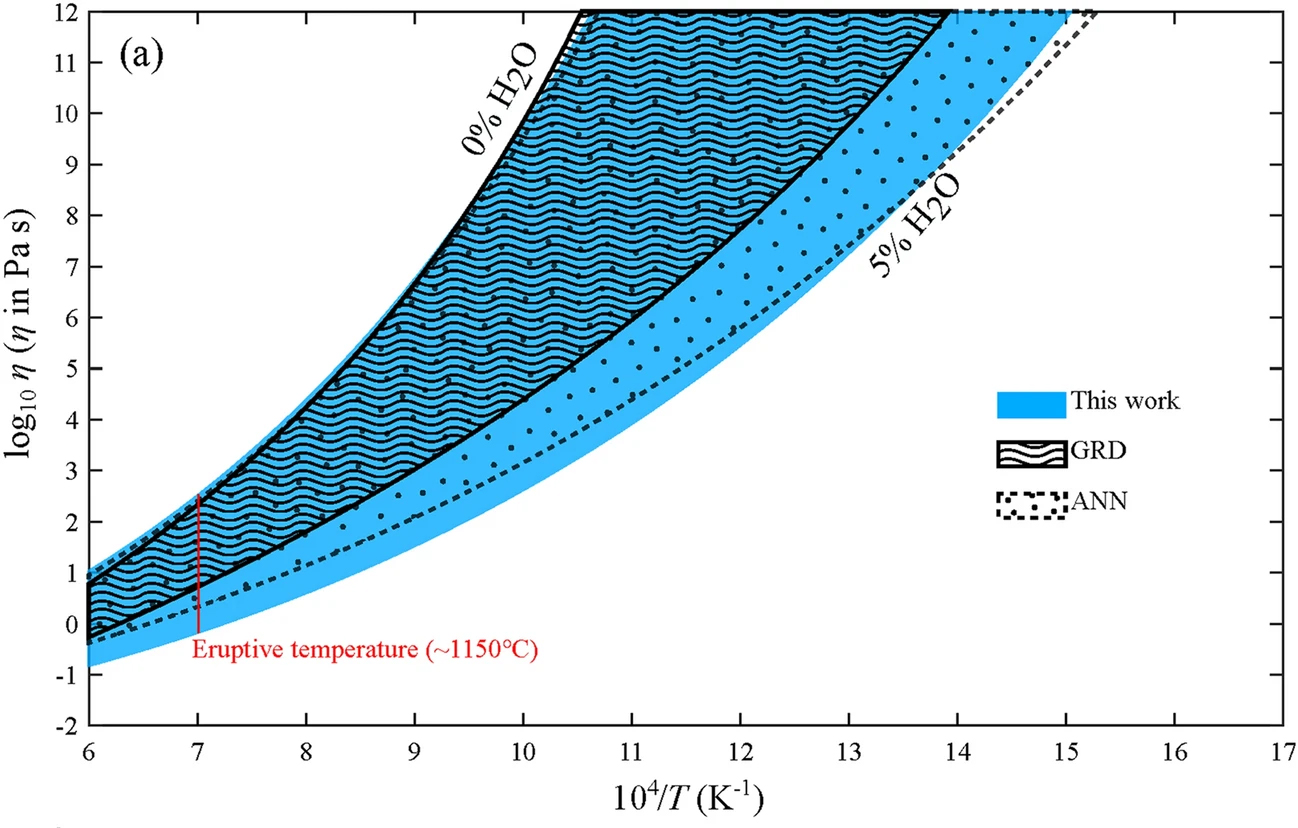
May 2023. PRIN 2022 project “CRYSTALKIN – Quantifying micro- and nano-CRYSTALlization KINetics of magmas: from laboratory and real-time in situ observations to implications on magma fragmentation”.
Dr. Fabio Arzilli (University of Camerino) and I have been awarded a 200k € PRIN 2022 project “CRYSTALKIN – Quantifying micro- and nano-CRYSTALlization KINetics of magmas: from laboratory and real-time in situ observations to implications on magma fragmentation”. This project aims to investigate the relationship between syn-eruptive physicochemical conditions of the magma and the time evolution of crystal and bubble formation and thus unveil their control on the eruptive style. The project will use cutting-edge experiments to simulate conditions of volcanic conduits and observe in situ the processes operating as they evolve with time.
April 2023. High-temperature furnace for water extraction from samples and high-precision quantification of the water content.
We are thrilled to introduce our latest addition – the high-temperature furnace coupled with a high-precision Karl Fischer module. The cutting-edge furnace is specifically engineered for extracting water from samples that release moisture at elevated temperatures. The system ensures seamless sample transfer without disrupting the circulation of the carrier gas. Moreover, its internal two-step drying mechanism guarantees a low background drift, enhancing the precision of analysis. With our latest addition, our laboratory gains a powerful tool to push the boundaries of research and analysis.
March 2023. Viscosity of anhydrous and hydrous peridotite melts.
In our new study, Di Genova et al. 2023 Chemical Geology, we report the first viscosity data of hydrous peridotite melts. Together with new anhydrous data, our study provides the largest and most comprehensive viscosity dataset over a broad chemical landscape and oxidation state. We provide a new viscosity model developed for the temperature- and water-dependent viscosity of peridotite melts (up to 12 mol% water content). We provide a viscosity calculator.
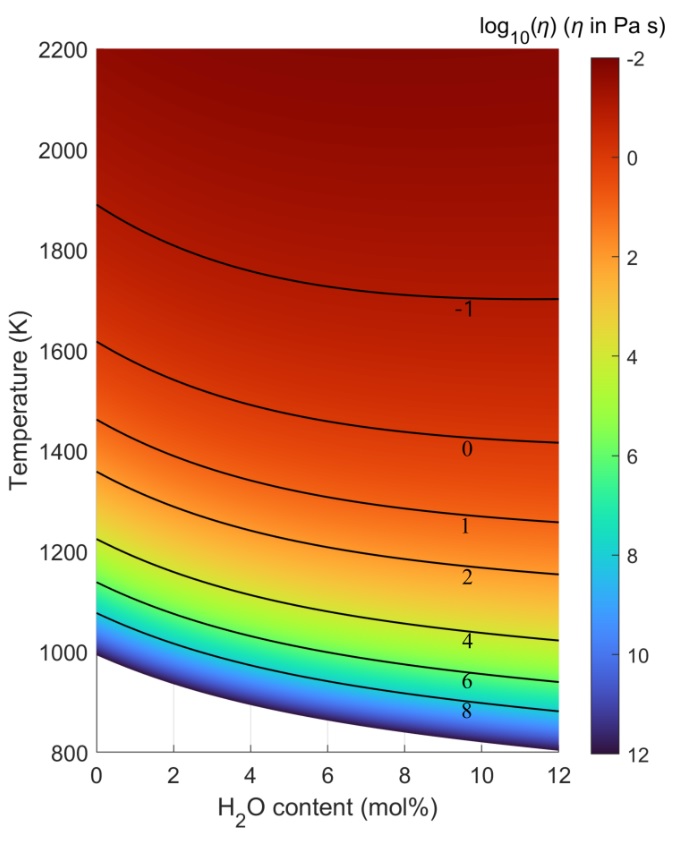
February 2023. Free to publish with Glass Europe: a new cost-free, peer-reviewed and open-access journal.
I am very excited to announce that I started my new role as an Associate Editor of Glass Europe, the cost-free, peer-reviewed, open-access journal, built by the community of European glass scientists and glass technologists. Glass Europe publishes results of original research, as well as reviews and perspective articles. Potential topics include – but are not limited to – physics, chemistry, properties, structure, applications, sustainability, forming, recycling, quality and history of glasses, glass-ceramics and melts. The main objective of this international open-access journal is to provide a cost-free, easy-to-operate and timely-publishing service, for high-quality novel research and technological developments in glass. Glass Europe is published by Deutsche Glastechnische Gesellschaft e.V. (DGG) and Union pour la Science et la Technologie Verrières (USTV).

January 2023. From micro to macro: how tiny crystals influence volcanic activity. Link in Italiano.
Nature Italy interviews the authors of our work on basaltic magmas from the volcanoes Stromboli and Etna.

December 2022. A chemical threshold controls volcanism at Mt Etna and Stromboli volcanoes. Link.
Uno studio, coordinato dall’Istituto di geologia ambientale e geoingegneria del Consiglio nazionale delle ricerche (Cnr-Igag) e dall’Università degli Studi Roma Tre e pubblicato su Nature Communications Earth & Environment, descrive come la formazione di nanocristalli (anche detti nanoliti, fino a 10.000 volte più piccoli di un capello umano) in magmi basaltici, possa essere indotta da minime differenze composizionali, in particolare, un più alto contenuto in metalli come titanio e ferro.
November 2022. An artificial neural network viscosity model of volcanic melts. Calculator here.
We report the first viscosity model of volcanic melts based on Artificial Neural Networks (ANN) in Langhammer et al. 2022, Geochemistry, Geophysics, Geosystems. The ANN uses composition, temperature, a structural parameter reflecting melt polymerisation and the alkaline ratio as input parameters. It successfully reproduces and predicts measurements in the database with significantly higher accuracy than previous global models for volcanic melt viscosities. A calculator based on our ANN model is available here. An Excel file to calculate viscosities using the MYEGA equation is supplied in the Supporting Information.
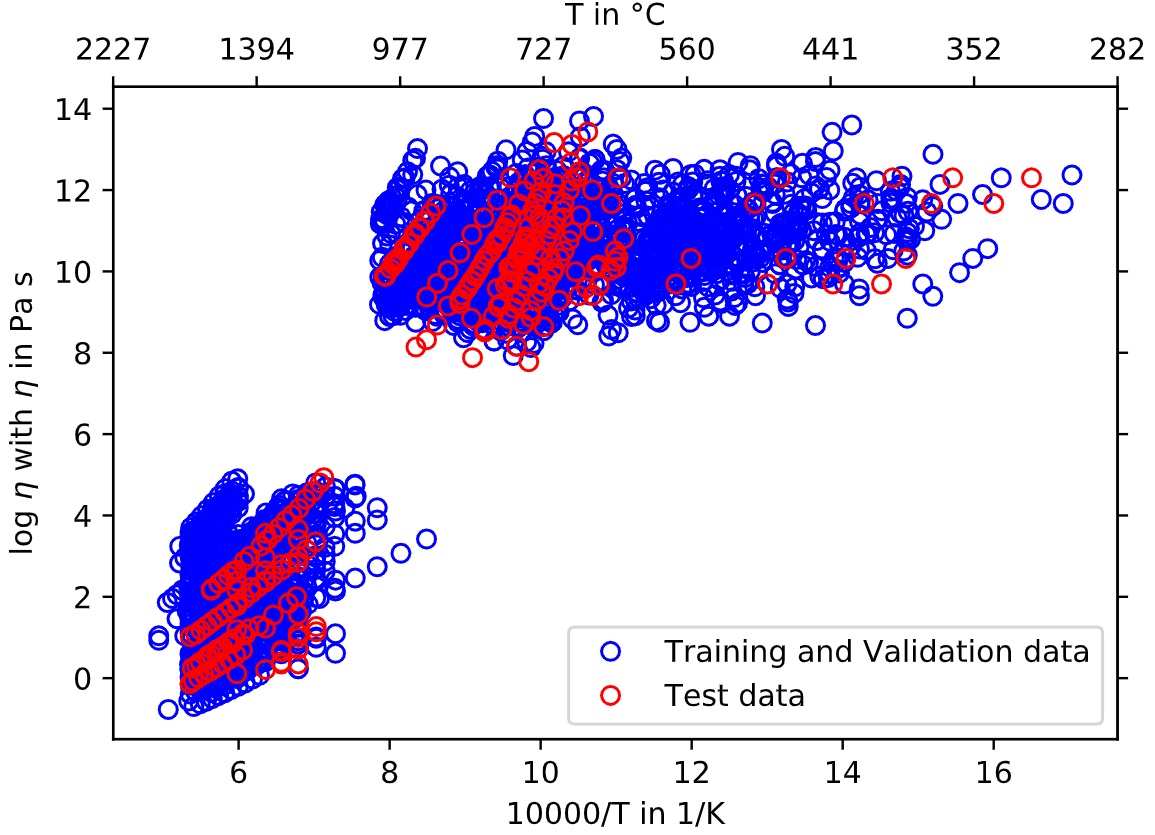
November 2022. A chemical threshold controls volcanism at Mt Etna and Stromboli volcanoes.
In Scarani et al. 2022, Nature Communications Earth & Environment our team from Rome, Bayreuth, Orléans and Clausthal have demonstrated the role of total iron and titanium content for the formation of nanosized crystals in magmas at eruptive conditions, relating these observations to the occurrence of explosive events at basaltic volcanoes such as Mt. Etna and Stromboli in Italy.
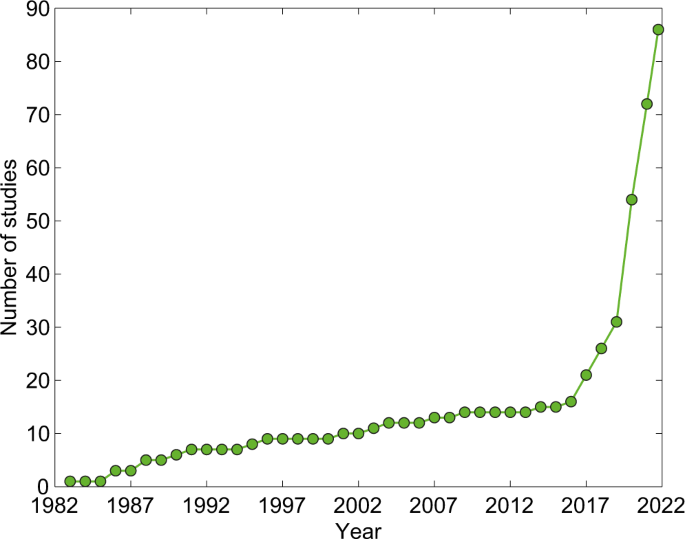
October 2022. Alfred Rittmann 2022 medal.
The Italian Volcanology Association awarded me the 2022 Alfred Rittmann medal. I thank the president and board of the Italian Volcanology Association. I am truly grateful to be the recipient of the Rittmann Medal and hope that my contributions can still pay tribute to this medal.
September 2022. Invited talk at ISTO and CEMHTI, France.
At the Institut des Sciences de la Terre d’Orléans (ISTO) and Conditions Extrêmes et Matériaux: Haute Température et Irradiation (CEMHTI) in France, we discussed the formation of nanocrystals in magmas and how we can study the process by combining experimental volcanology and materials science. I thank you for the invitation and look forward to working with you.
July 2022. Keynote at Goldschmidt Conference, Hawaii.
During the Goldschmidt conference, we discussed challenges in experimental volcanology, how these may impact our knowledge and eventually how to move forward. Thanks to the conveners for the invitation and all speakers for their interesting presentations.
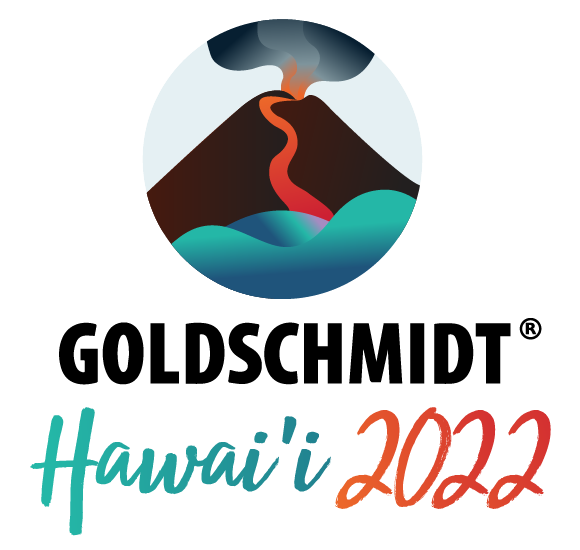
June 2022. Invited talk at the University of Camerino, Italy.
At the University of Camerino, we discussed collaborations in volcanology and materials science. Thank you for the invitation and I am looking forward to working with you.
June 2022. Invited talk at the Ludwig Maximilian University of Munich, Germany.
At LMU’s Department of Earth and Environmental Sciences, we discussed new perspectives on experimental volcanology. It was nice to come back after a few years.
June 2022. Viscosity of volcanic melts: A global model
We report the first viscosity model of volcanic melts based on Artificial Neural Networks (ANN) in Langhammer et al. Preprint. The ANN uses composition, temperature, a structural parameter reflecting melt polymerisation and the alkaline ratio as input parameters. It successfully reproduces and predicts measurements in the database with significantly higher accuracy than previous global models for volcanic melt viscosities. A calculator based on our ANN model is available here. An Excel file to calculate viscosities using the MYEGA equation is supplied in the Supporting Information.
May 2022. Dendritic crystallization in hydrous basaltic magmas
With Arzilli et al. 2022, Nature communications, we present the first in-situ 3D time-series of crystal growth in high-temperature experiments under water-saturated conditions at crustal pressures. This new 4D approach provides unique quantitative information on the growth kinetics and textural evolution of pyroxene crystallization in basaltic magmas. Our results provide new insights into the processes controlling which intrusions lead to eruption, and which do not.
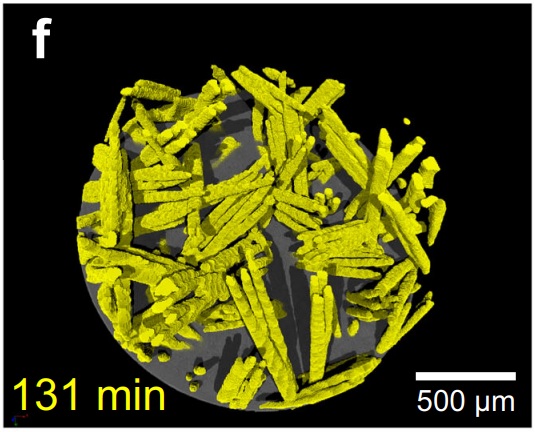
March 2022. ERC Consolidator Grant (2021) “NANOVOLC – Nanoscale dynamics of volcanic processes: Experimental insights and numerical simulations of explosive eruptions”
I have been awarded an ERC research consolidator grant for my project “NANOVOLC – Nanoscale dynamics of volcanic processes: Experimental insights and numerical simulations of explosive eruptions”. NANOVOLC will investigate the molecular and elusive failure of magma through a combination of field observations at active volcanoes, experimental volcanology and petrology, construction of new HT-HP apparatus, synchrotron light source and artificial intelligence. This was made possible through the support and cooperation between the universities of Bayreuth, Bristol, Manchester and TU-Clausthal, and the ESRF and DLS synchrotrons.
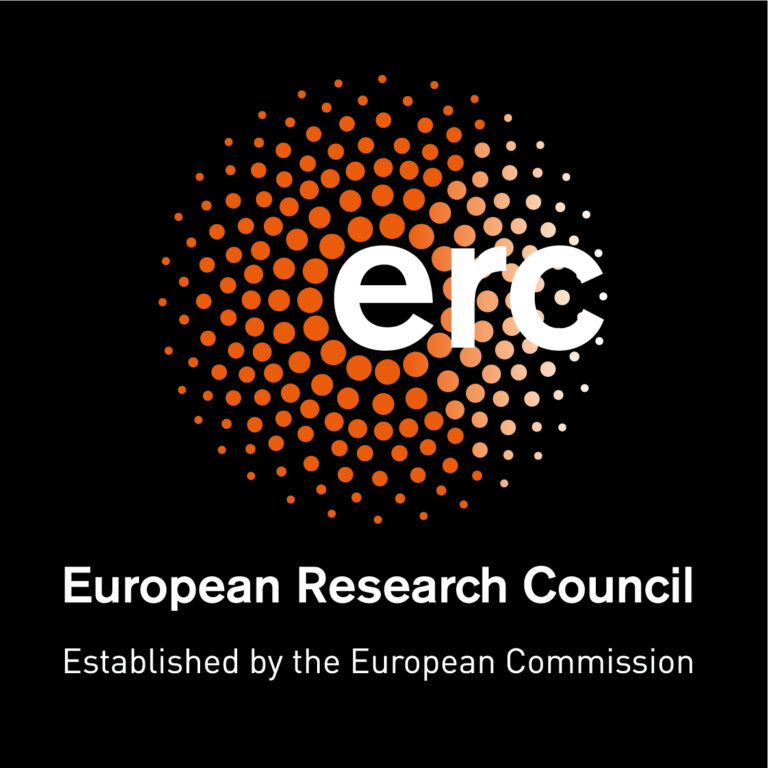
January 2022. Determination of cooling rates of glasses over four orders of magnitude.
In Scarani et al. 2020, Contributions to Mineralogy and Petrology, we present a series of Differential Scanning Calorimetry experiments designed to parameterize the cooling rate – fictive temperature relationship of glass-forming melts. For the first time, we use flash calorimetry to access unprecedented cooling rates up to 104 K s-1. We present a normalization procedure and provide a step-by-step “how-to” guide that allows the derivation of the cooling rate embedded in glasses. Our work has also implications for the study of melts prone to rapid (nano)crystallization and dehydration.
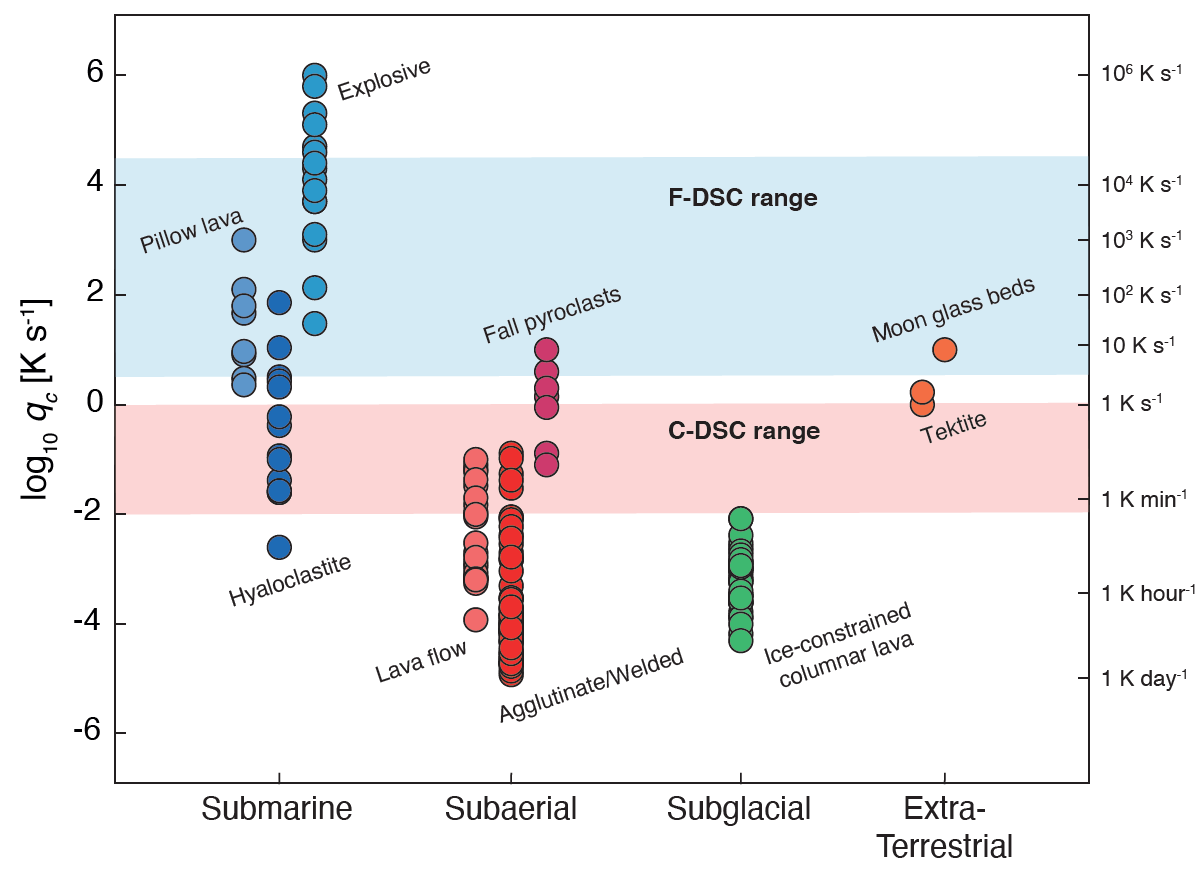
December 2021. Rapid-quenching of high-pressure depolymerized hydrous silicate (peridotitic) glasses.
In Bondar et al. 2022, Journal of Non-Crystalline Solids, we report the first successful quenching, recovery, and characterization of high-pressure hydrous silicate glasses of peridotite composition, with H2O contents from 0 to 5 wt%, using a large-volume high-pressure apparatus equipped with a novel rapid-quench cell. Our study provides fertile ground for developing new studies of the structure and properties relationship of extremely depolymerized melts.
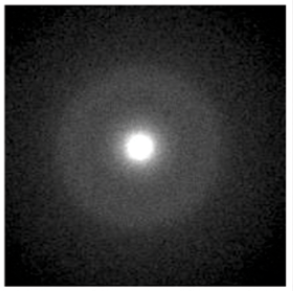
November 2021. The glass transition and the non-Arrhenian viscosity of carbonate melts.
We report the first calorimetric observation of the glass transition for a carbonate melt in Dingwell et al. 2022, American Mineralogist. Viscosities just above the glass transition temperature were obtained by applying a shift factor to the calorimetric results. These viscosity measurements at supercooled temperatures, dramatically extend the temperature range of data for carbonates which were previously restricted to superliquidus viscosities.
September 2021. Modeling the viscosity of anhydrous and hydrous volcanic melts.
Our efforts towards understanding the viscosity of volcanic melts and magmas continue with Langhammer et al. 2021, Geochemistry, Geophysics, Geosystem. In this paper we present a new physical formulation of the viscosity of volcanic melts and magmas, together with a strategy for quantifying the chemical and physical effect of nanometer crystals on viscosity.
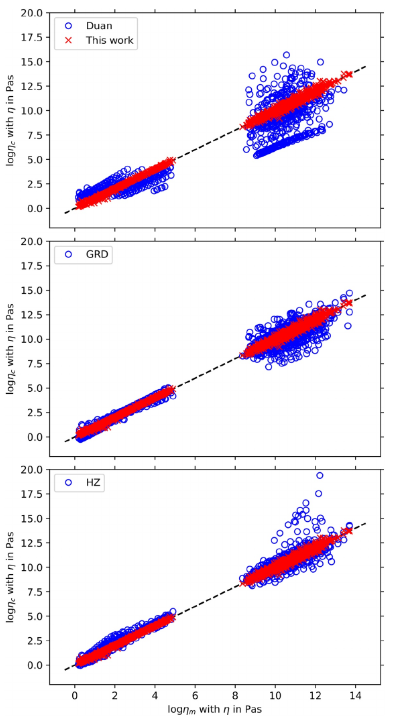
July 2021. Diamond Light Source annual review.
Our study on the nanoscale dynamics of magma (Di Genova et al. 2020, Science Advances) was included in the list of studies for the annual review of DLS synchrotron. Once again, we thank DLS for the extraordinary support and we look forward to visiting the laboratories.
July 2021. Research and Funding Opportunities in Geochemistry in Germany.
Joining the “Research in Germany” Information Session at Goldschmidt conference organized by Alexander von Humboldt Foundation, the German Academic Exchange Service and the German Research Foundation.

June 2021. Estimating the viscosity of volcanic melts.
We present an alternative route to derive the viscosity of volcanic melts based on the vibrational properties of their parental glasses. This enables the accurate quantification of the effect of nanocrystal formation on magma viscosity and therefore the eruptive dynamics of volcanoes.
Results and implications are presented in Cassetta et al. 2021, Scientific Reports.
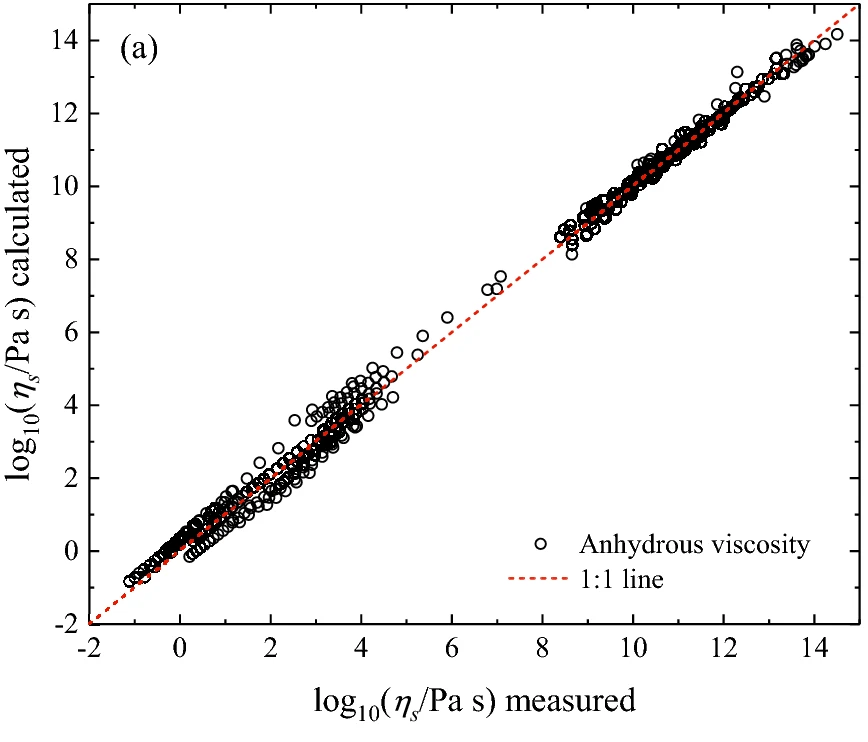
June 2021. A Burp or a Blast? Robin George Andrews writes also of “nanoscopic nuisances” influencing magma viscosity.
Quanta magazine focuses on basaltic volcanism. The article acknowledges also the contribution from our collaborative network, Di Genova et al. 2020, Science Advances.

May 2021. In situ quantification of crystallisation kinetics in basaltic magma: Implications for lava flow.
We performed real-time, in situ synchrotron X-ray microtomography, studying the influence of temperature-time paths on the nucleation and growth of clinopyroxene and plagioclase in basaltic magma.
Results and implications are presented in Le Gall et al. 2021, Earth and Planetary Science Letters.
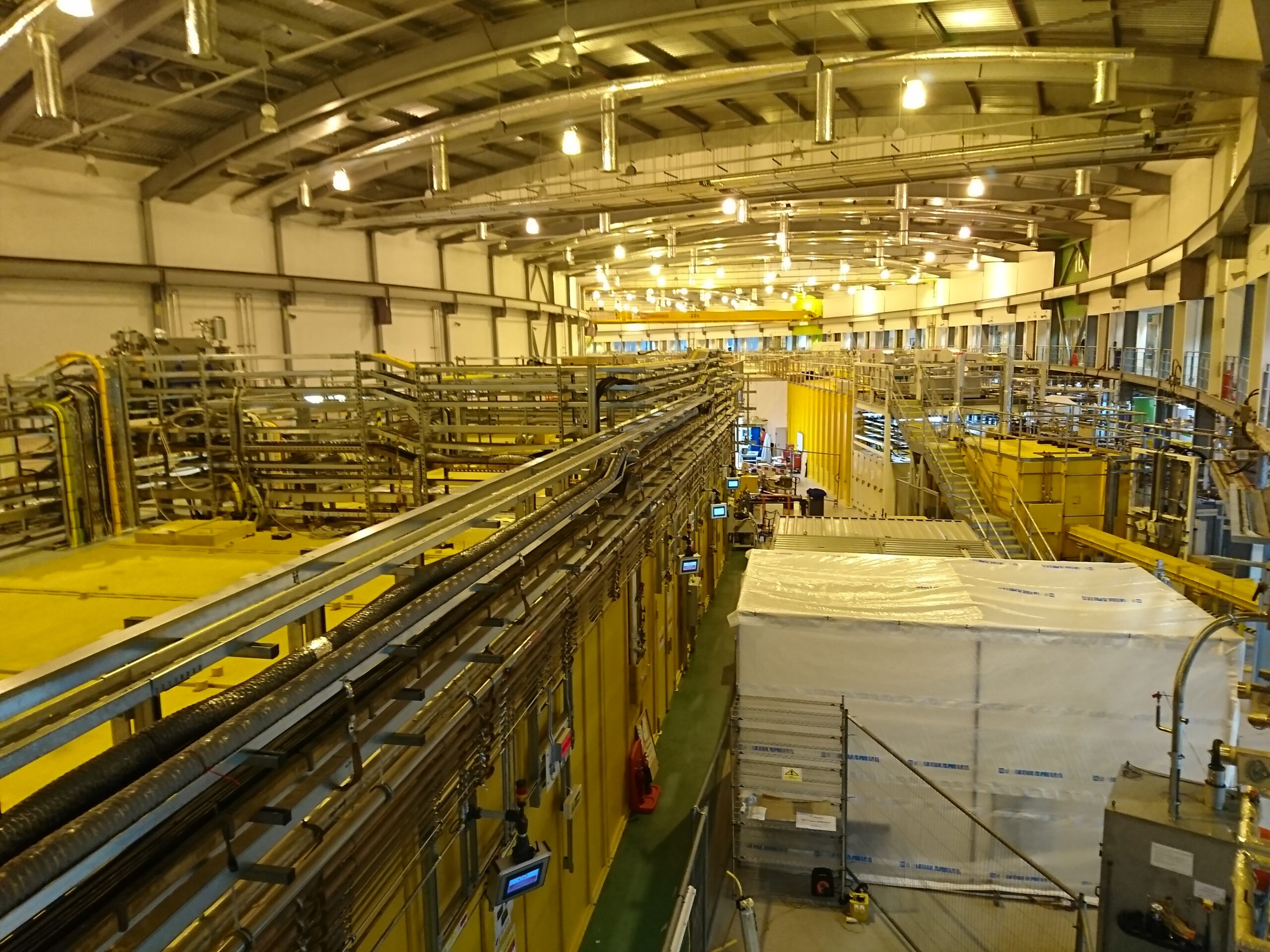
April 2021. News & Views.
Nature Geoscience focuses on explosive volcanic eruptions fed by low-viscosity magmas. This News & Views communication acknowledges also two contributions from our collaborative network, Arzilli et al. 2019, Nature Geoscience and Di Genova et al. 2020, Science Advances.
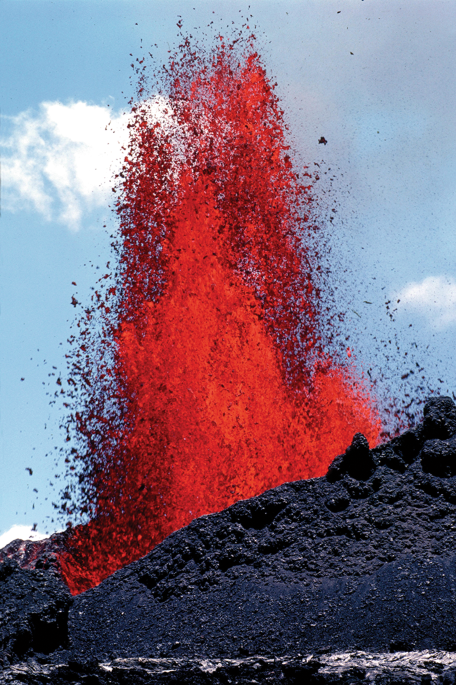
January 2021. A nanoscale perspective of volcanic eruptions.
This article authored by Harini Barath was originally published with the title “Crystal Power” in Scientific American 324, 1, 17 (January 2021).
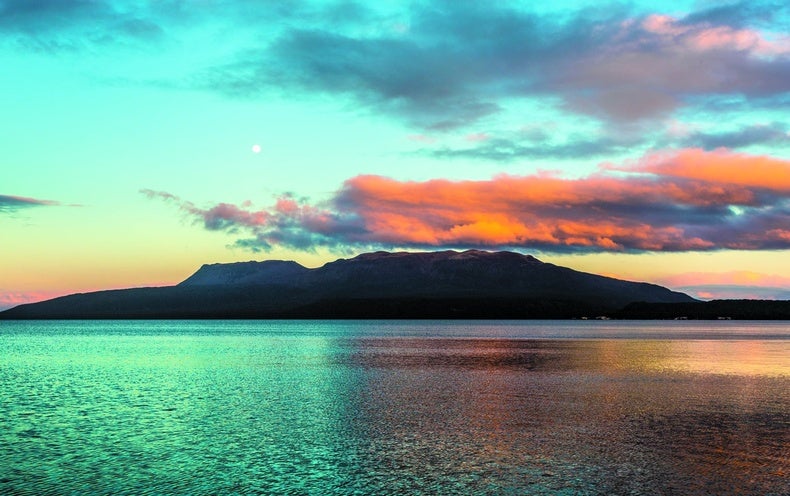
January 2021. The effect of iron and alkali on the nanocrystal-free viscosity of volcanic melts.
We combined Raman spectroscopy and DSC to retrieve the viscosity of nanocrystal-free rhyolites. The viscosity can increase up to 3 log units with changing Fe2+/Fetot and Na/(Na+K). This has important implications for the eruptive dynamics of rhyolitic magmas.
Results and implications are presented in Stabile et al. 2021, Chemical Geology.
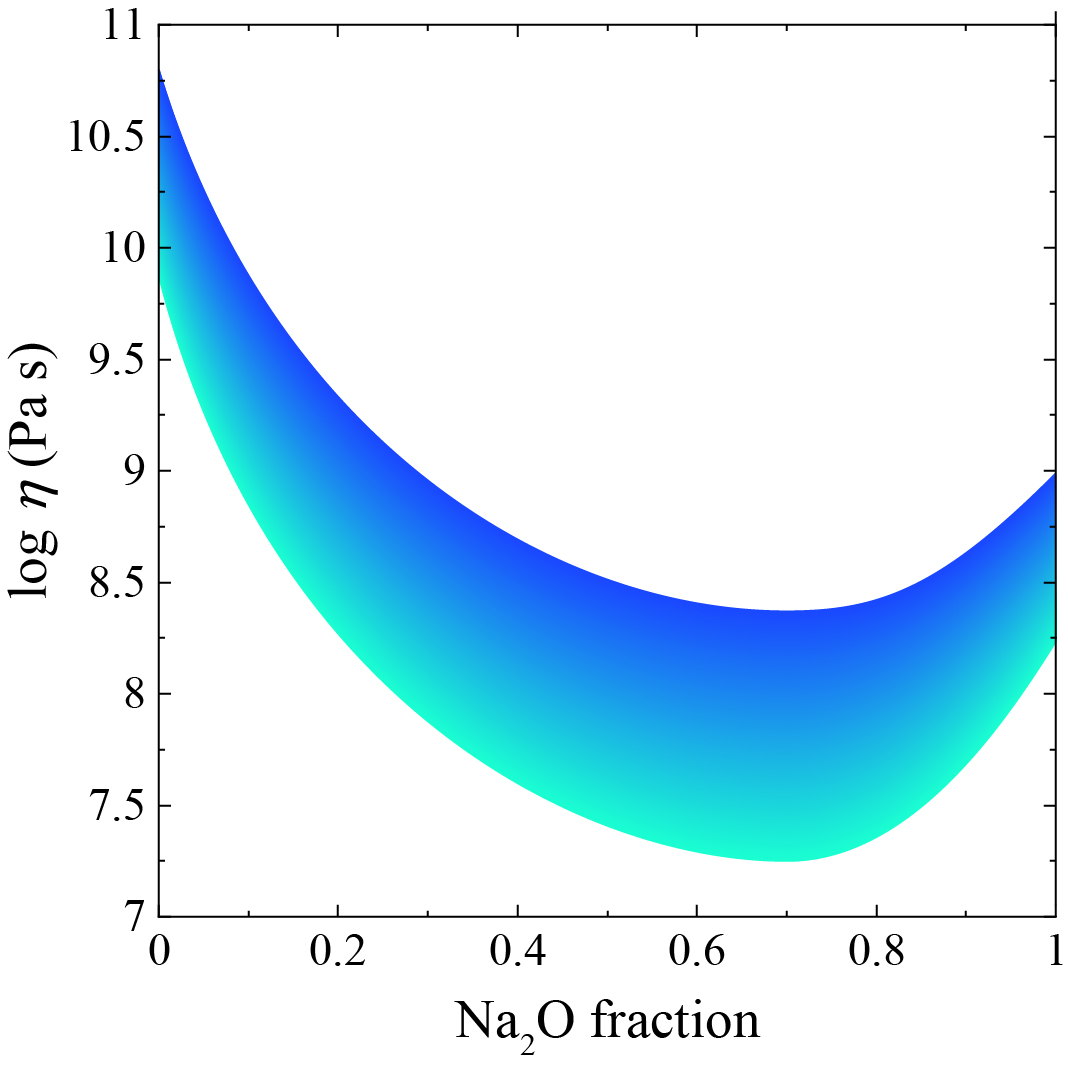
December 2020. On the transitions in the eruptive style of basaltic volcanism.
A new study constrains the combined effect of magma rheology, ascent rate and outgassing on basaltic eruption style. We focused on Kilauea and Mt. Etna volcanoes.
Results and implications are presented in La Spina et al. 2021, Earth and Planetary Science Letters.
The study, published in Science Advances, describes how nano-sized crystals (nanolites), 10,000 times smaller than the width of a human hair, can have a significant impact of the viscosity of erupting magma, resulting in previously unexplained and explosive eruptions.
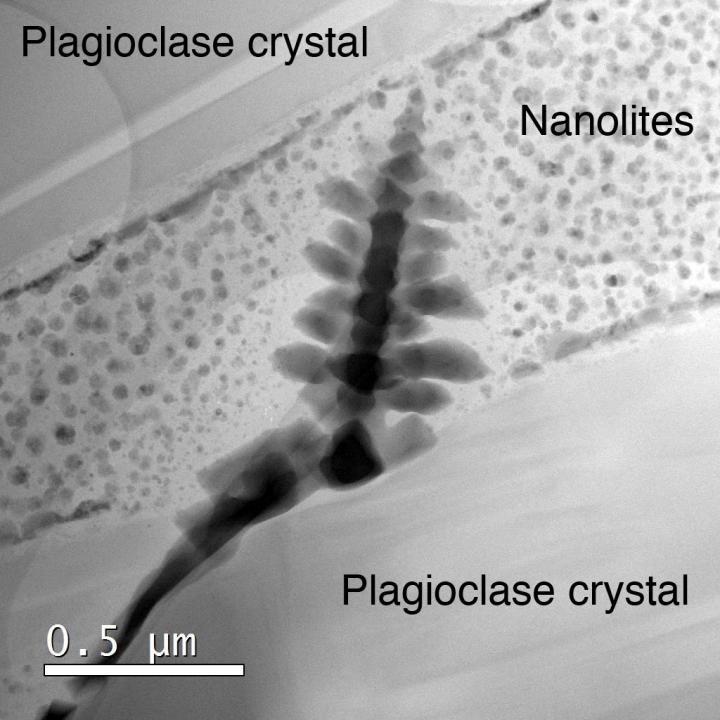

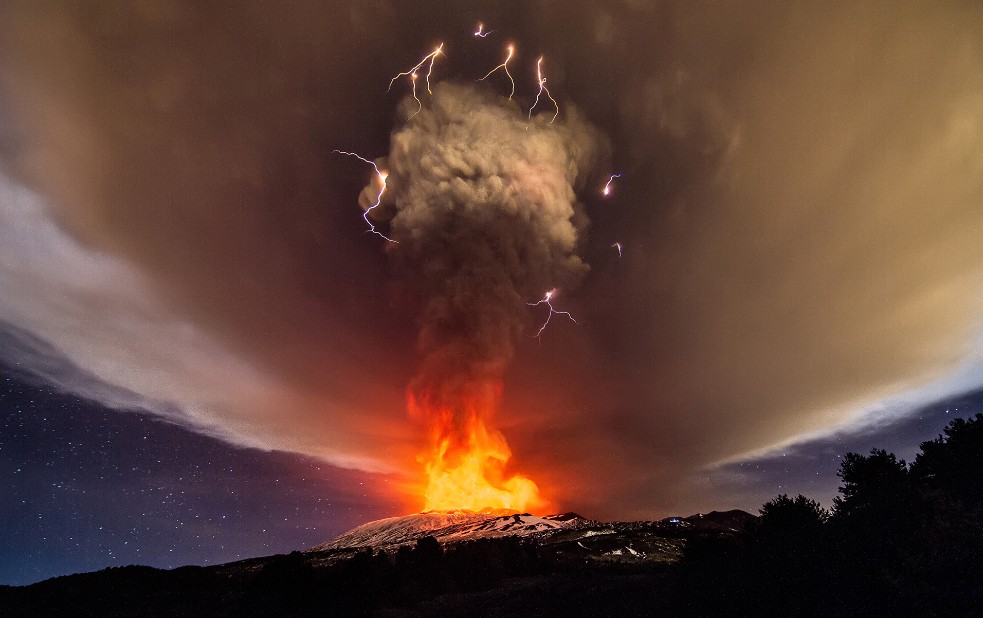
August 2019 – March 2020. Exploring and unravelling the effect of nano-heterogeneity on the viscosity of technical and volcanic silicate melts.
We present a multi-pronged approach to demonstrate how the emergence of nano-heterogeneities exerts a previously unexplored influence on the viscosity of multicomponent silicate melts.
Results and implications are presented in Di Genova et al. 2020, Journal of Non-Crystalline Solids.
February 2018 – January 2020. Studying the effect of nanocrystal formation on magma viscosity and dynamics of volcanic eruptions.
Based on experimental evidence and building on hypotheses presented in 1) peer-reviewed studies 14, 20 and 27, 2) preliminary resutls included in scientific proposals for synchrotron radiation-based studies between 2018 and 2019, 3) submitted and unpublished study in 2018, and together with R. A. Brooker, H. Mader, and J. W. E. Drewitt (University of Bristol, UK), the following synchrotron radiation-based in situ studies, focused on exploring the dynamics of nanolite formation and growth in volcanic melts, were carried out:
- In situ study of crystallisation in molten iron silicate (proposal EE17615-1, Principal Investigators D. Di Genova and R. Brooker). February 2018, Diamond Light Source (DLS), UK. See the gallery below for more details.
- In situ study of nano- and micro-crystallisation in volcanic melt under different fO2 (proposal ES 793, Principal Investigator D. Di Genova). September 2018, European Synchrotron Radiation Facility (ESRF), France. See the gallery below for more details.
- In situ observation of incipient crystallisation of volcanic melts (proposal SM20447-1, Principal Investigators D. Di Genova and R. Brooker). February 2019, Diamond Light Source (DLS), UK. See the gallery below for more details.
These studies were conducted with scientific and/or experimental support of (in alphabetic order):
- Anzellini (DLS, UK), F. Arzilli and E. C. Bamber (University of Manchester, UK), J. Deubener (Technical University of Clausthal, Germany), S. Fanara (University of Göttingen, Germany), L. Hennet (CEMHTI-CNRS, France), A. Longo (ESRF, France), D. R. Neuville (IPGP, France), O. Shebanova (DLS, UK), G. La Spina (University of Manchester, UK).
Afterwards, to study the effect of formation, volume and size of nanolites on the rheology of magmas and, eventually, on the style of volcanic eruptions, in collaboration with J. Deubener (Technical University of Clausthal, Germany) and Nobuyoshi Miyajima (Bayerisches Geoinstitut, Germany), I carried out:
- Viscosity measurements of magma analogues and volcanic melts.
- In situ study of volcanic melts degassing.
Results and implications are presented in Di Genova et al. 2020, Science Advances.
Scientists shine light on tiny crystals behind unexpected violent eruptions.
2015 – June 2020. Quantifying microstructural evolution in moving magma.
We present experimental apparatus and analytical toolkit for the in situ X-ray tomography based quantification of magmatic microstructural evolution during rheological testing. We present the first 3D data showing the evolving textural heterogeneity within a shearing magma, highlighting the dynamic changes to microstructure that occur from the initiation of shear, and the variability of the microstructural response to that shear as deformation progresses.
Details of experimental apparatus, results and implications are presented in Dobson et al. 2020, Frontiers in Earth Science.
July – December 2019. Flash Differential Scanning Calorimetry (Flash DSC), Clausthal University of Technology, Germany.
We present the first FDSC measurements with heating and cooling rates up to 3 × 105 K min-1 of glass-forming systems prone to crystallization. We provide a universal shift factor to retrieve the viscosity of silicate and fluorophosphate melts from ~106 up to ~1012 Pa s without the need of performing viscosity measurements.
Results and implications are presented in Al-Mukadam et al. 2020, Journal of Non-Crystalline Solids.
September 2019. SIMP-SGI-SOGEI conference, Parma, Italy.
Keynote “Volcanic eruptions: a nanoscale perspective” at the session “Experimental and theoretical studies of magmatic processes“. Conveners and Chairpersons Michael R. Carroll (University of Camerino, Italy), Fabio Arzilli (University of Manchester, UK), Paola Stabile (University of Camerino, Italy).
July 2019. Clausthal University of Technology, Germany.
When experimental volcanologists and materials scientists meet each other: hosting Dr Alessandro Vona and Alex Scarani (PhD candidate) from the Experimental Volcanology and Petrology Laboratory (University of Roma Tre, Italy) at the Institute of Non-Metallic Materials, Clausthal University of Technology.
February 2019. Diamond Light Source (DLS), UK.
I22 beamline: Small and Wide Angle X-ray Scattering (SAXS and WAXS). Link to I22.
In situ observation of incipient crystallisation of volcanic melts.
Proposal SM20447-1 [Principal Investigators Danilo Di Genova and Dr Richard Brooker (University of Bristol, UK)].
Simultaneous in situ acquisition of both SAXS and WAXS from volcanic melts at high temperature during crystallisation in order to probe the melt structure.
Results of our scientific campaign are the object of a study entitled “In situ observation of nanolite growth in volcanic melt: a driving force for explosive eruptions” Di Genova et al. 2020, Science Advances.
Scientists shine light on tiny crystals behind unexpected violent eruptions.
September 2018. European Synchrotron Radiation Facility (ESRF), France.
BM26 – DUBBLE – DUTCH-BELGIAN BEAMLINE beamline: Small and Wide Angle X-ray Scattering (SAXS and WAXS) and X-ray Absorption Fine Structure Spectroscopy (XAFS). Link to BM26.
In situ study of nano- and micro-crystallisation in volcanic melt under different fO2.
Proposal ES 793 (Principal Investigator Danilo Di Genova).
Simultaneous in situ acquisition of SAXS, WAXS and XAFS from volcanic melts at high temperature during crystallisation in order to probe the melt structure and iron oxidation state.
Results of our scientific campaign are the object of a study entitled “In situ observation of nanolite growth in volcanic melt: a driving force for explosive eruptions” Di Genova et al. 2020, Science Advances.
Scientists shine light on tiny crystals behind unexpected violent eruptions.
February 2018. Diamond Light Source (DLS), UK.
I15 beamline: X-ray diffraction (XRD). Link to I15.
In situ study of crystallisation in molten iron silicate.
Proposal EE17615-1 [Principal Investigators Danilo Di Genova and Dr Richard Brooker (University of Bristol, UK)].
In situ acquisition of XRD from volcanic melts at high temperature during crystallisation in order to explore the timescale of crystal nucleation.
Results of our scientific campaign are the object of a study entitled “In situ observation of nanolite growth in volcanic melt: a driving force for explosive eruptions” Di Genova et al. 2020, Science Advances.
Scientists shine light on tiny crystals behind unexpected violent eruptions.
January, September and November 2018. Diamond Light Source (DLS), UK.
Under the framework of the NERC/NSF Large Grant on “Quantifying Disequilibrium Processes in Basaltic Volcanism” (PI Prof Mike Burton, University of Manchester).
I12 beamline: Time-resolved tomography. Link to I12.
Intermediate-pressure, fugacity controlled crystallisation of basaltic magmas.
Proposal EE20384-1 (Principal Investigator Prof Peter Lee, University College London).
Degassing processes under pressure in basaltic volcanism.
Proposal EE19499-1 (Principal Investigator Prof Mike Burton, University of Manchester).
Capturing the crystallisation of basaltic magmas under controlled redox and thermal conditions.
Proposal EE18204-1 (Principal Investigator Prof Mike Burton, University of Manchester).
Crystallisation kinetics of basaltic magmas in 4D.
Proposal EE12392-2 (Principal Investigator Prof Mike Burton, University of Manchester).
Results published in Polacci et al. 2018, Scientific Reports and Arzilli et al. 2019, Nature Geoscience.
